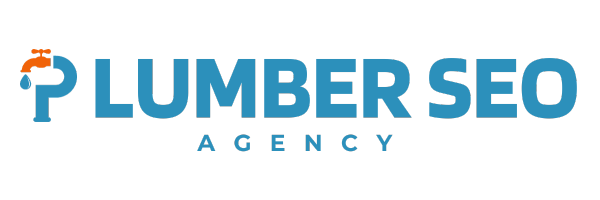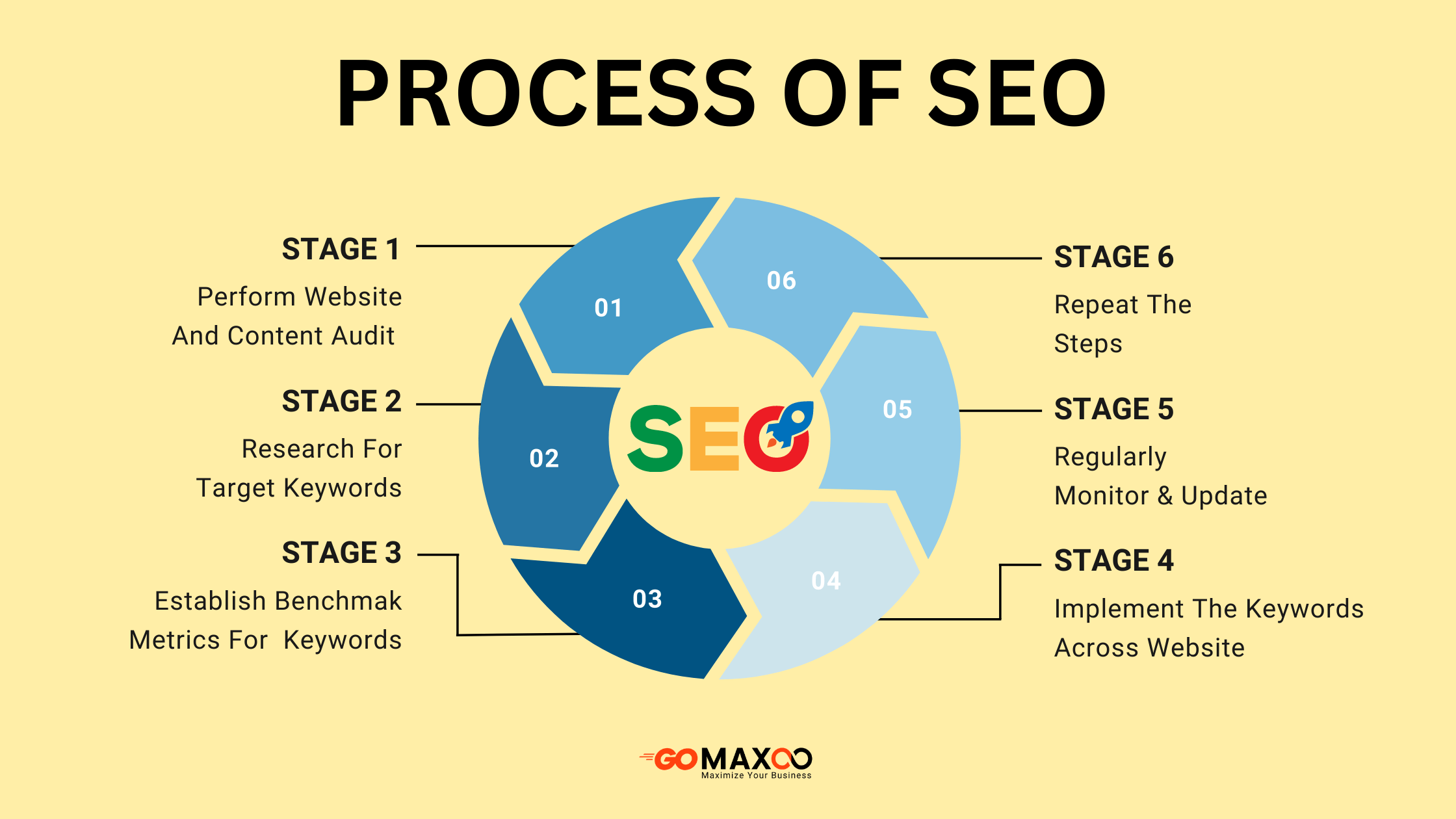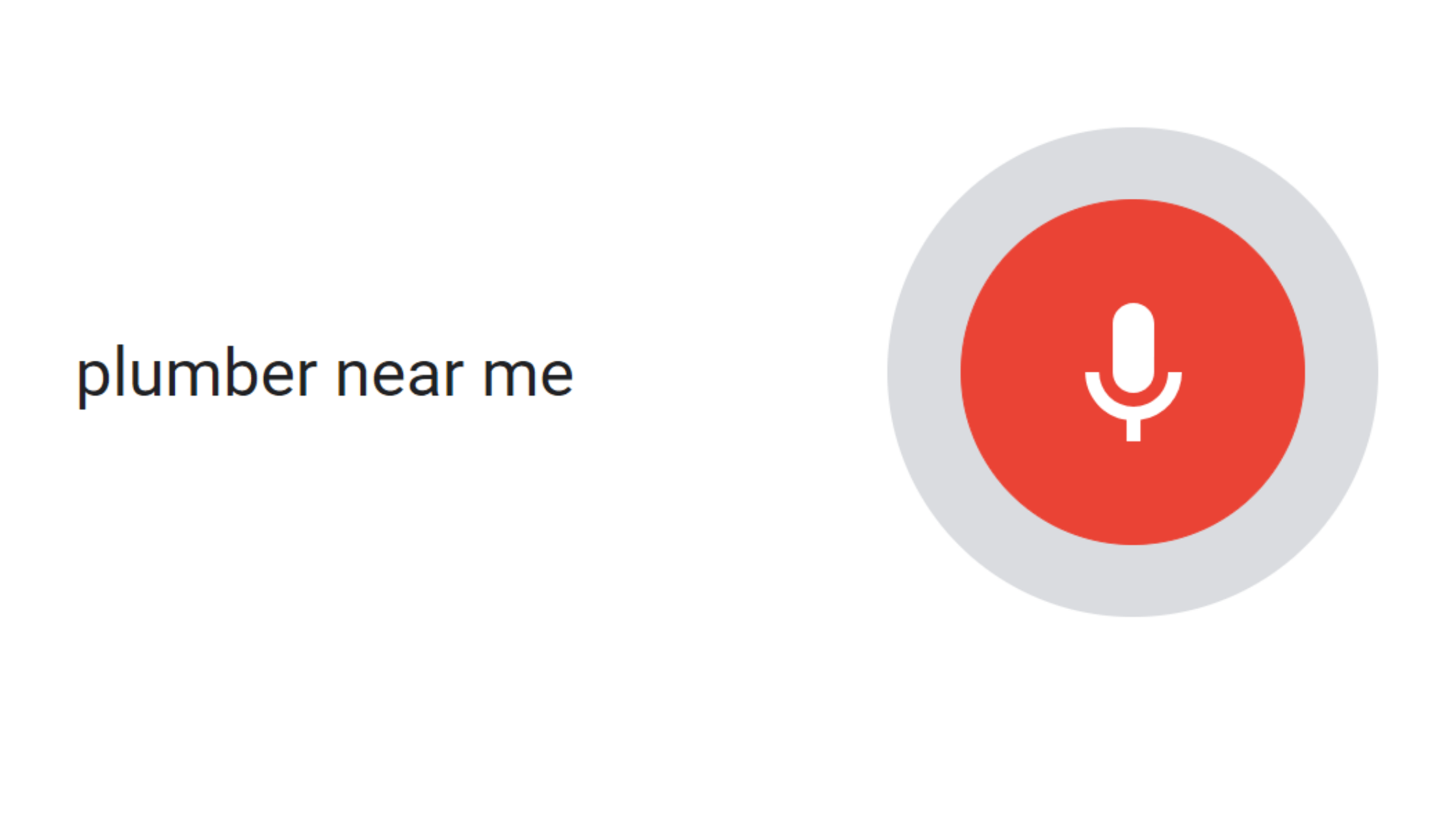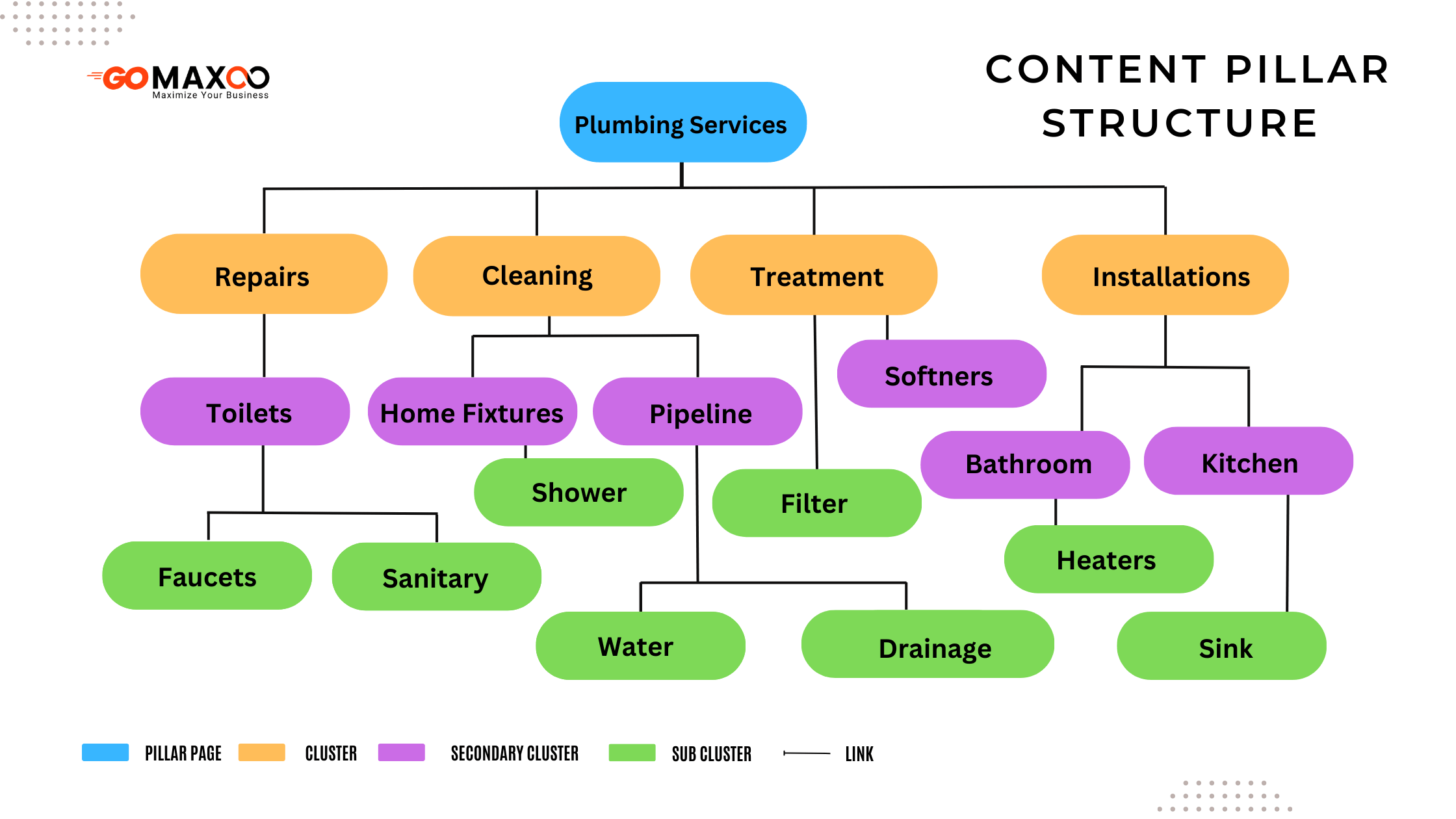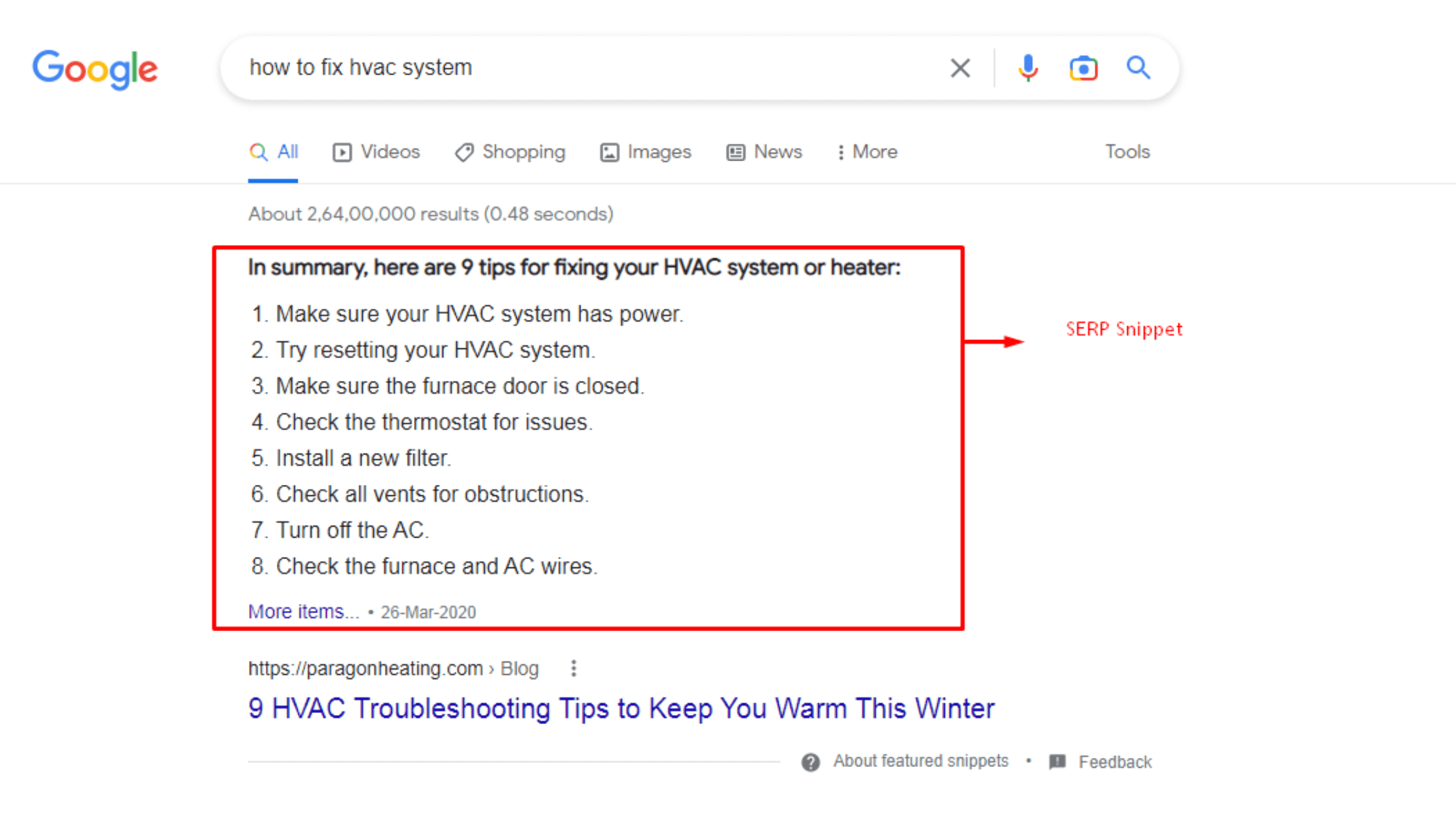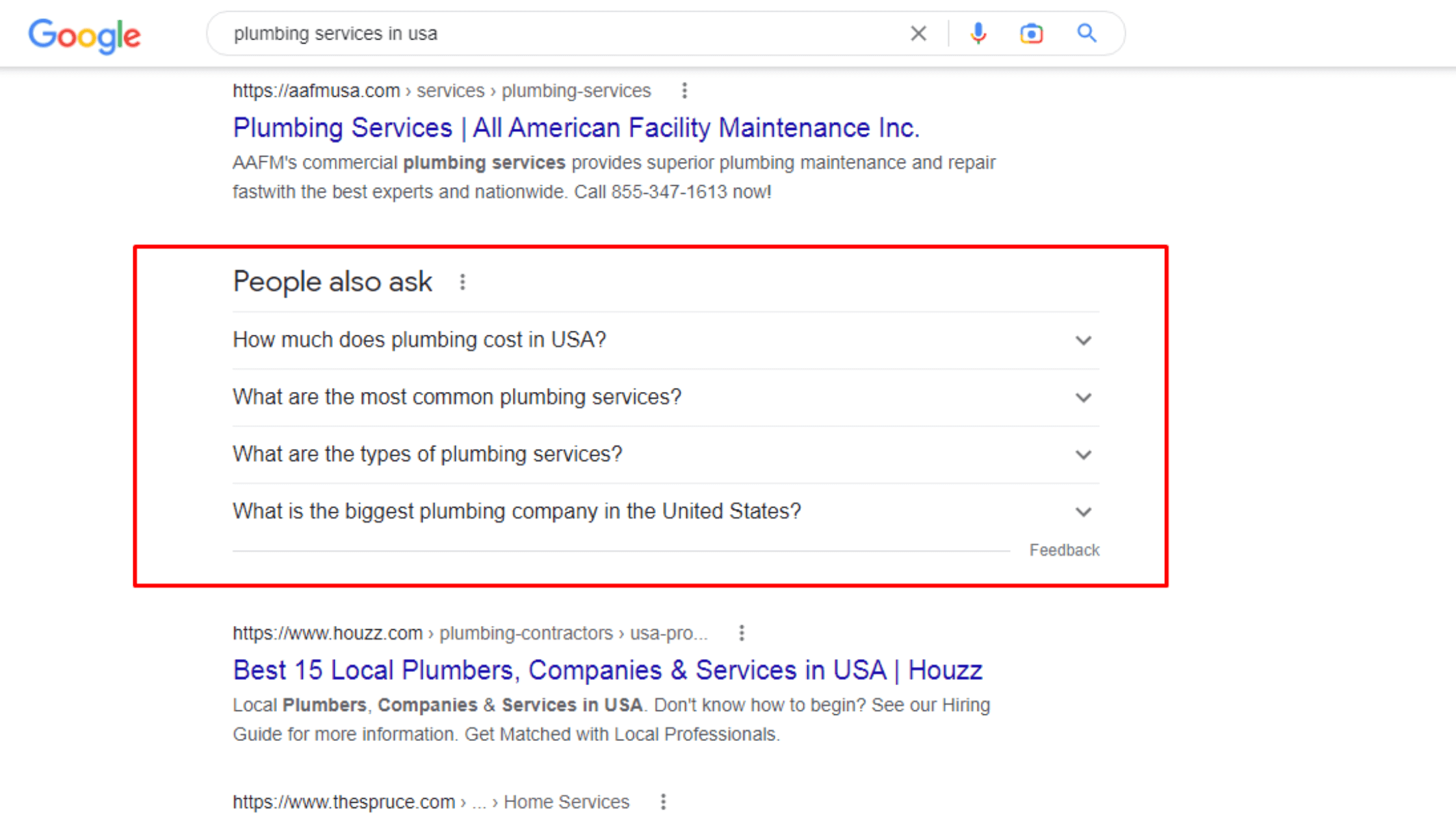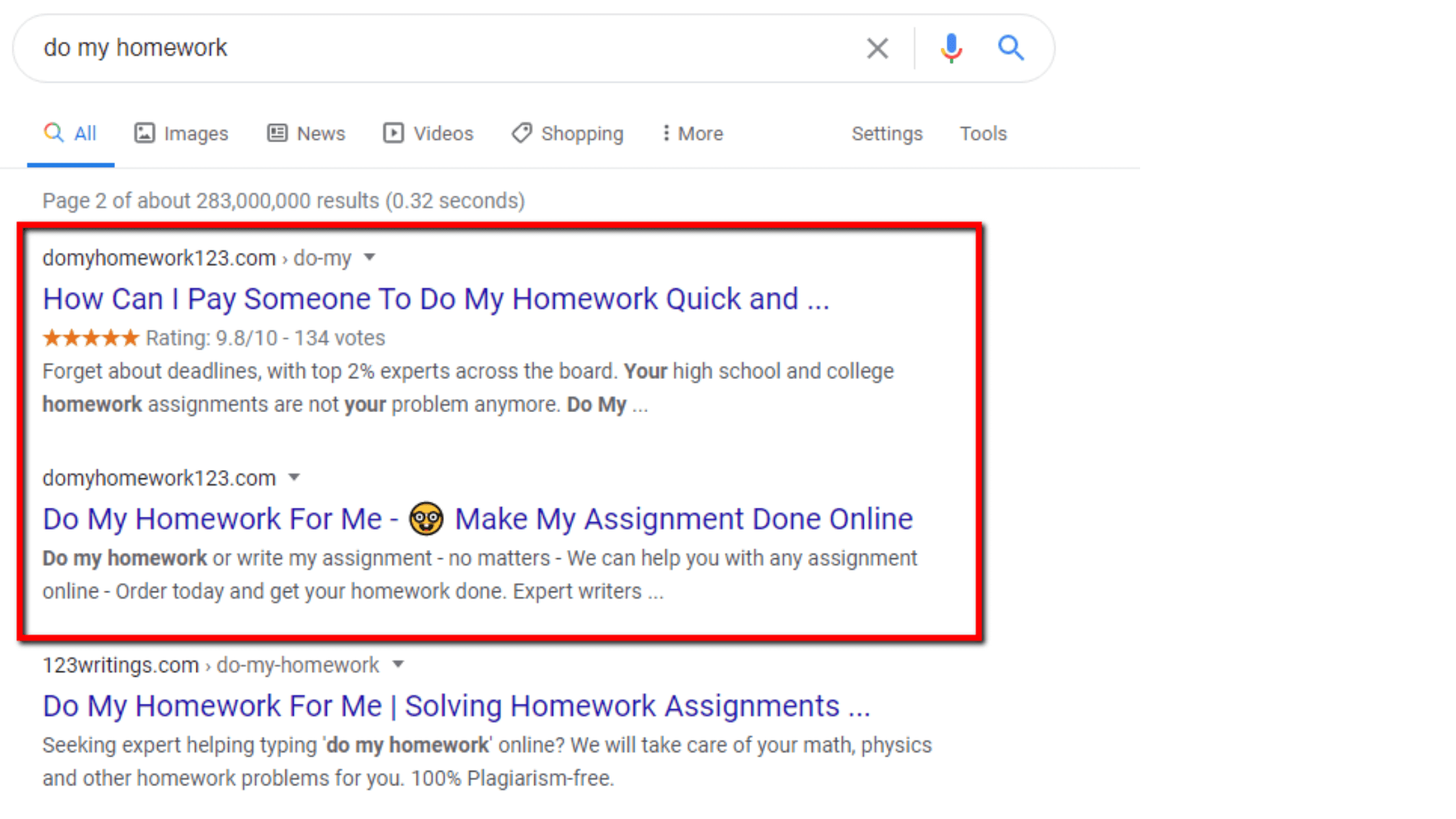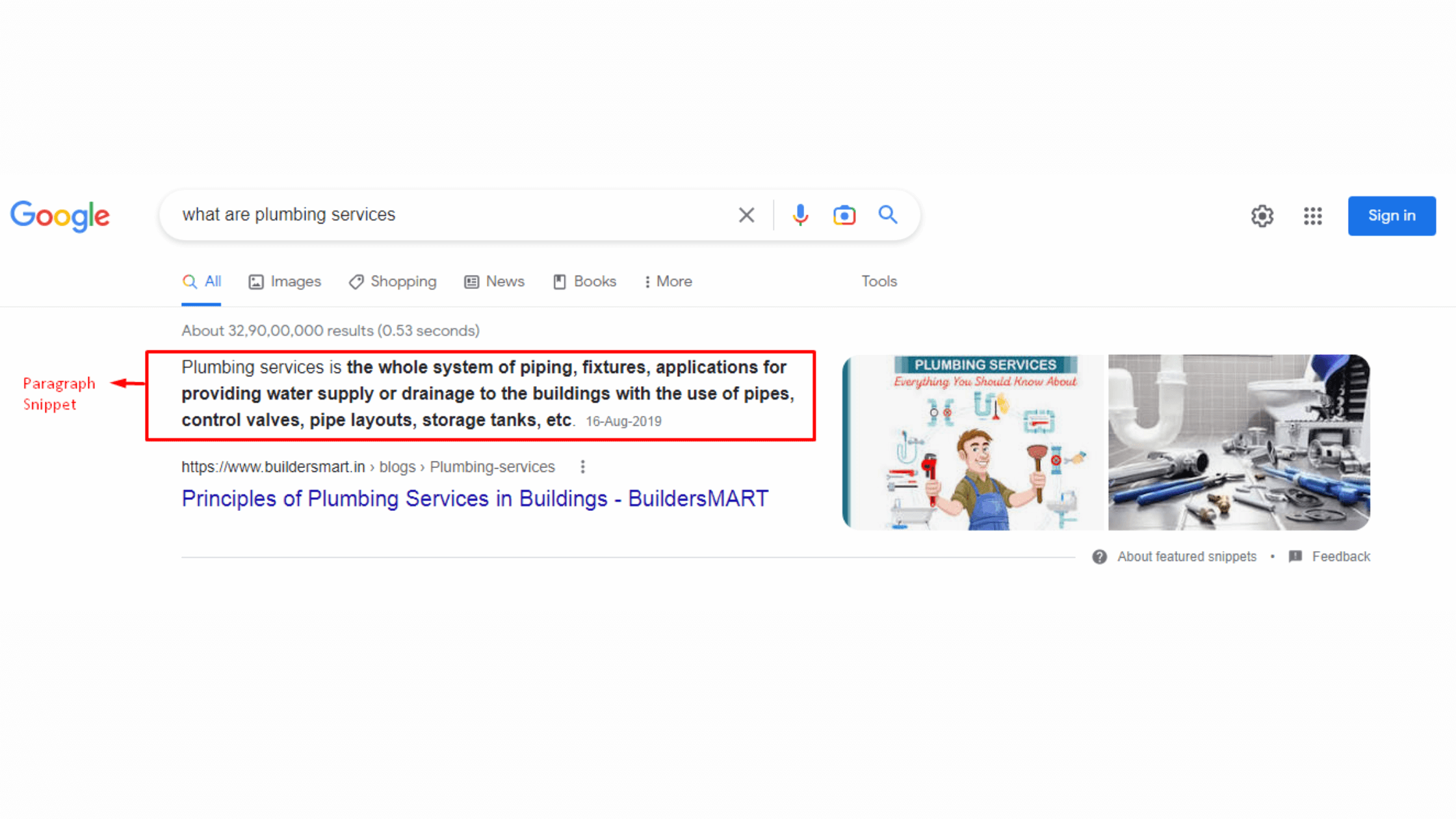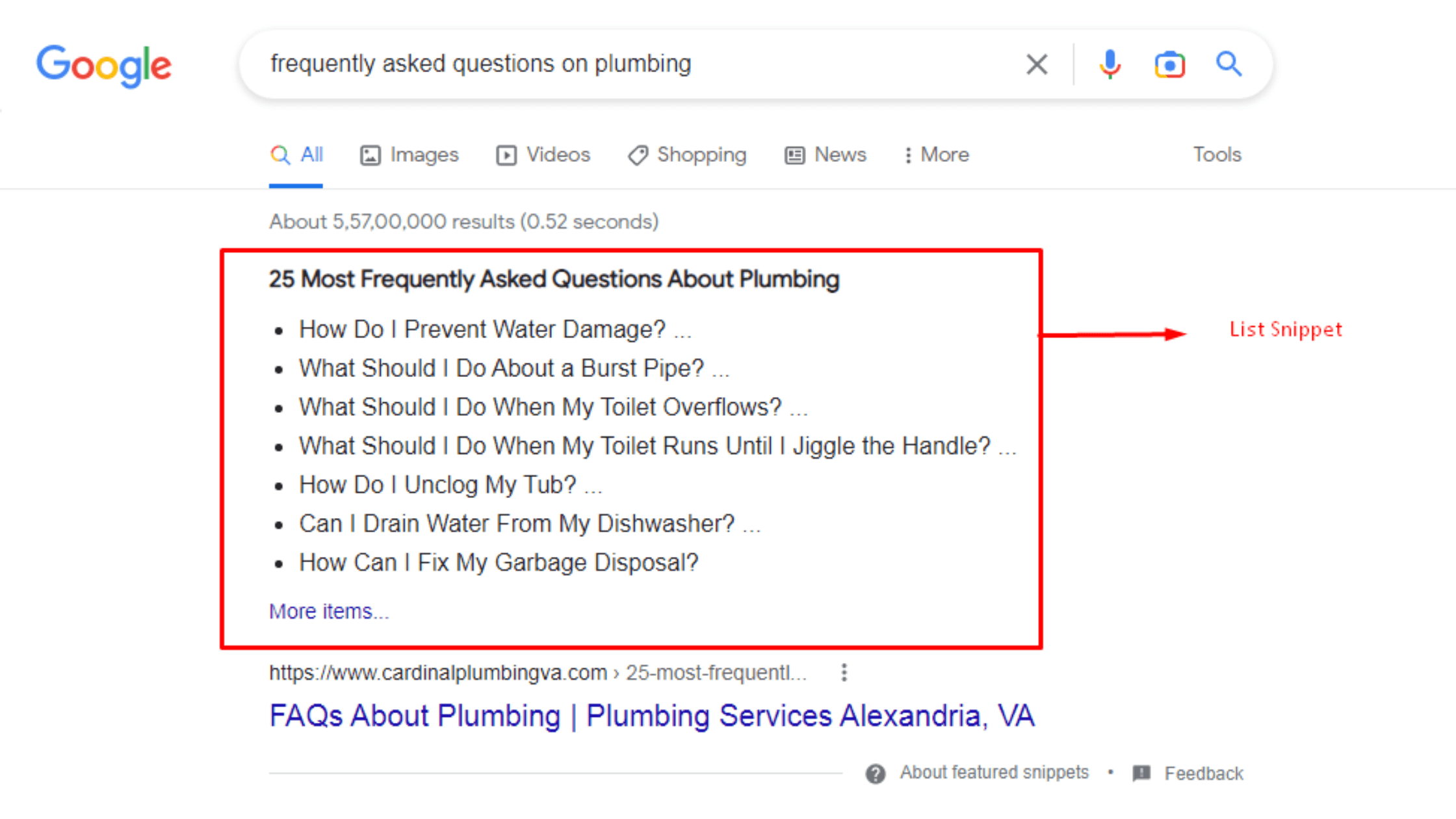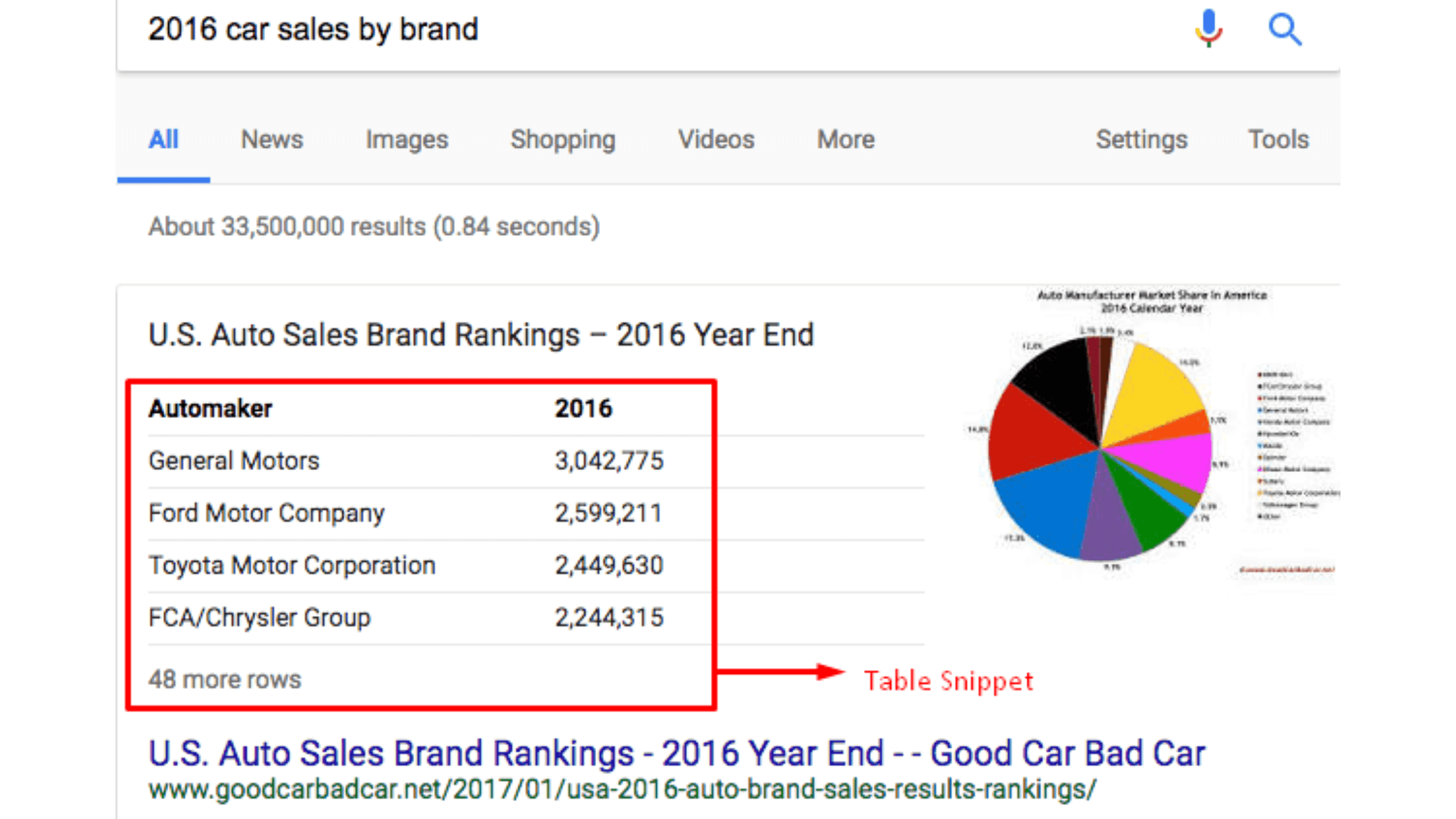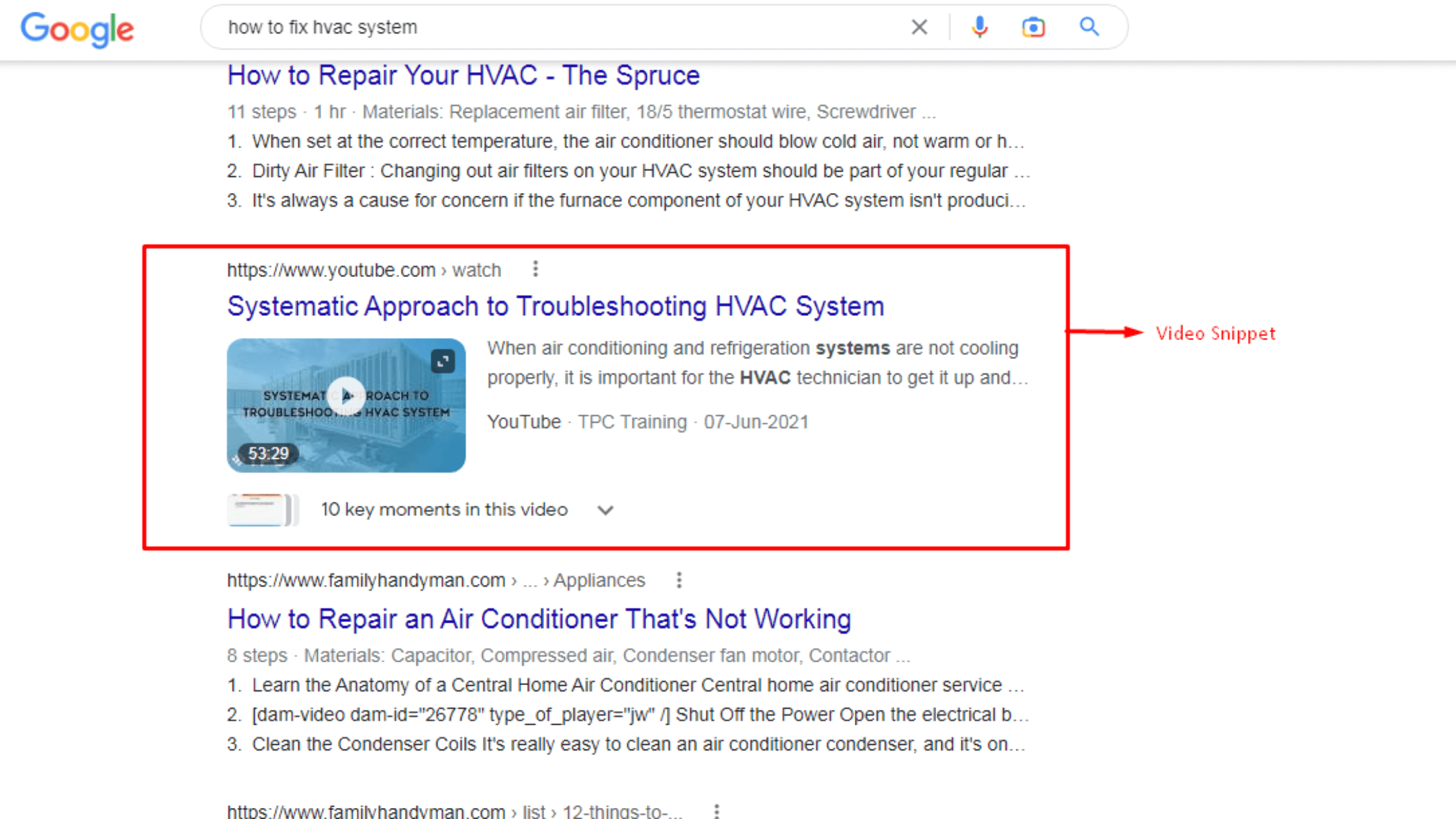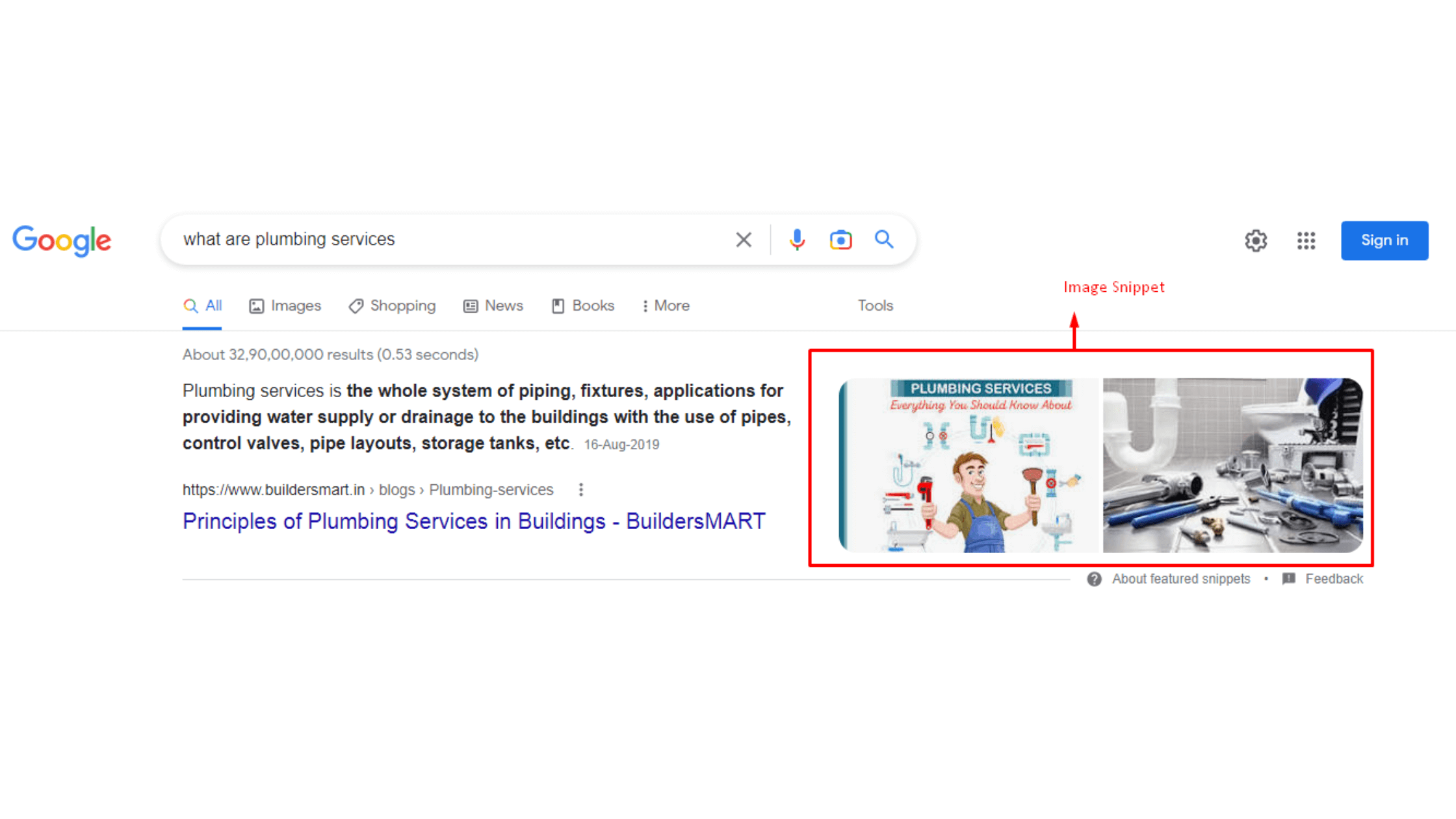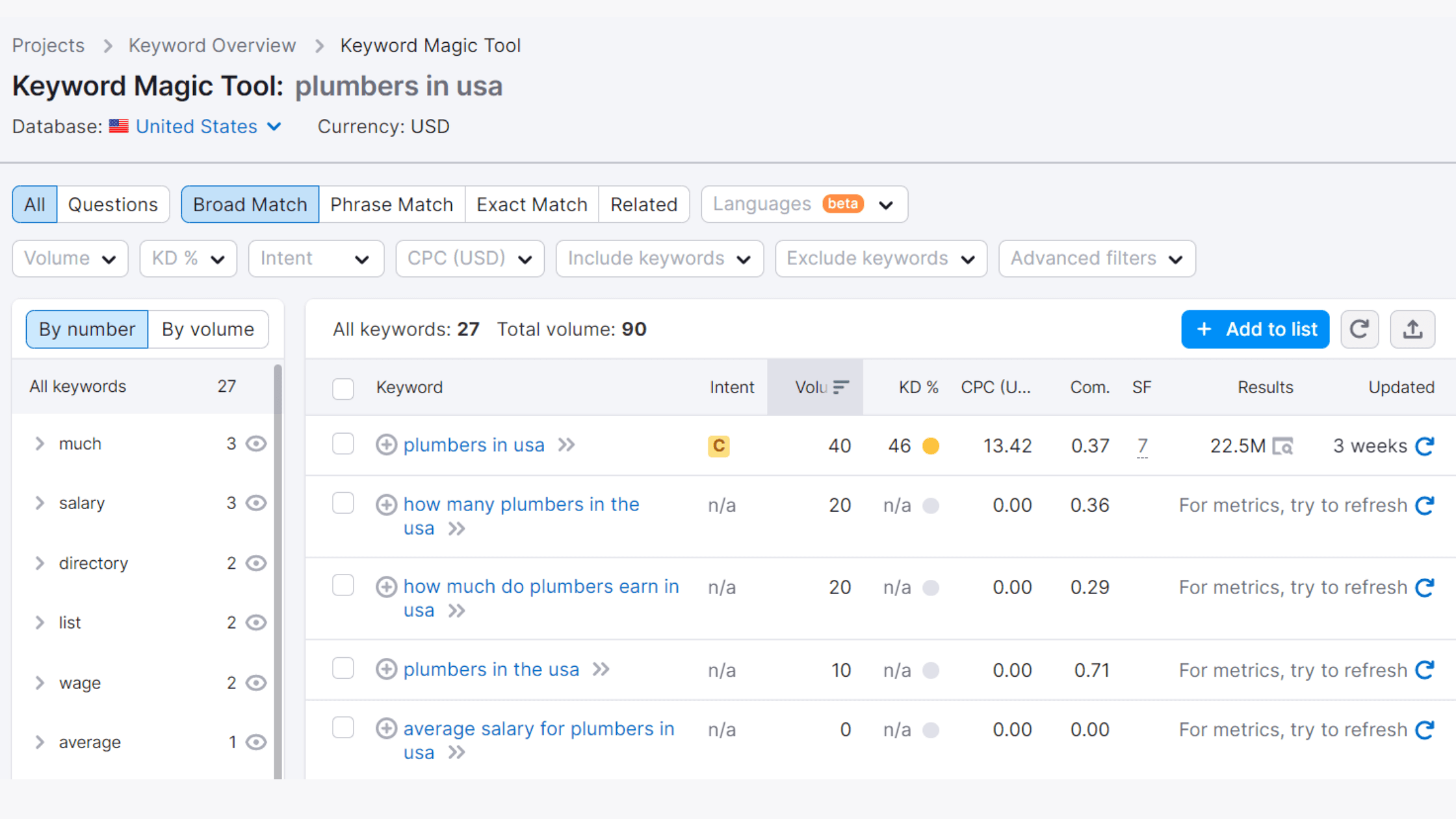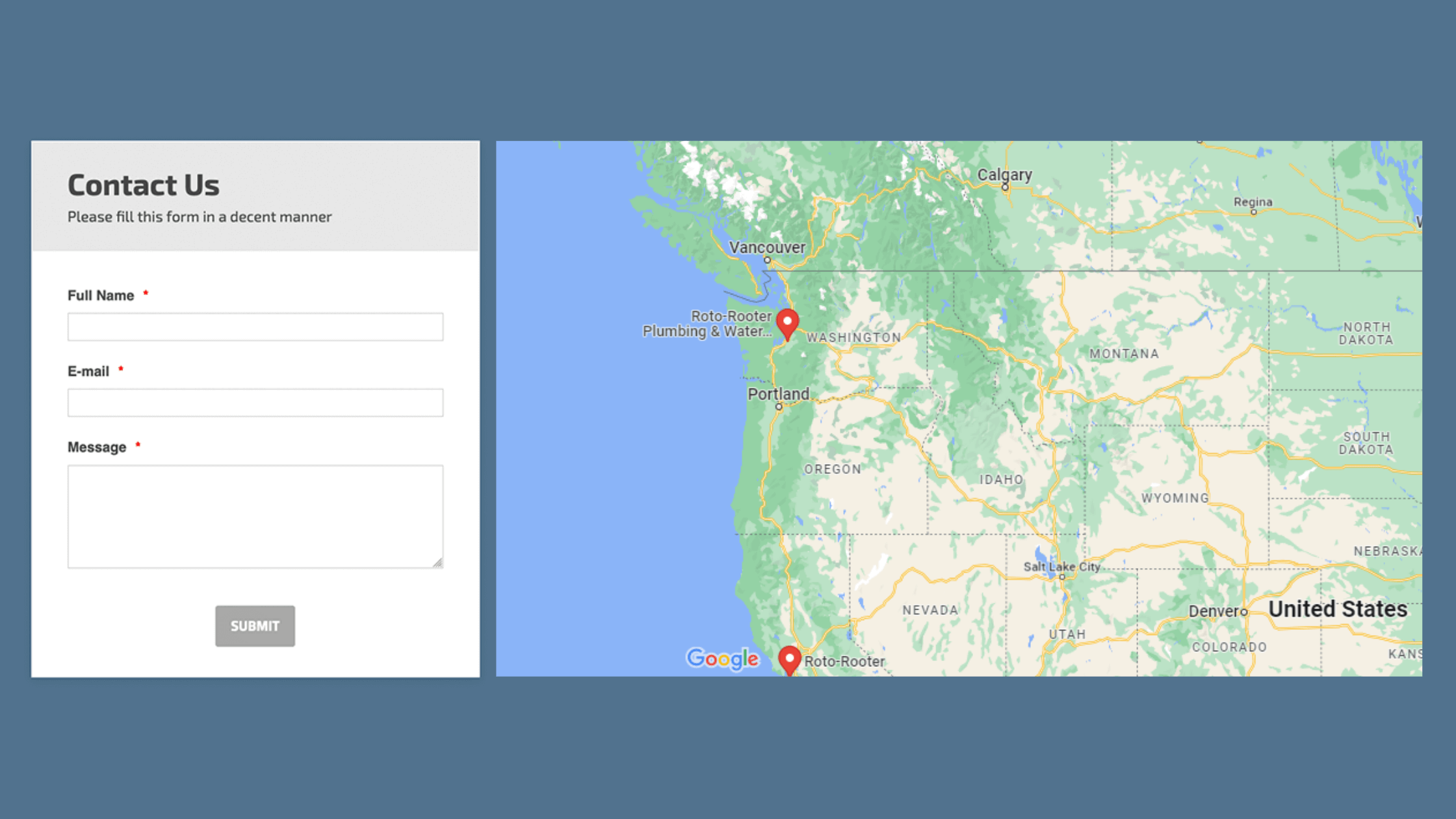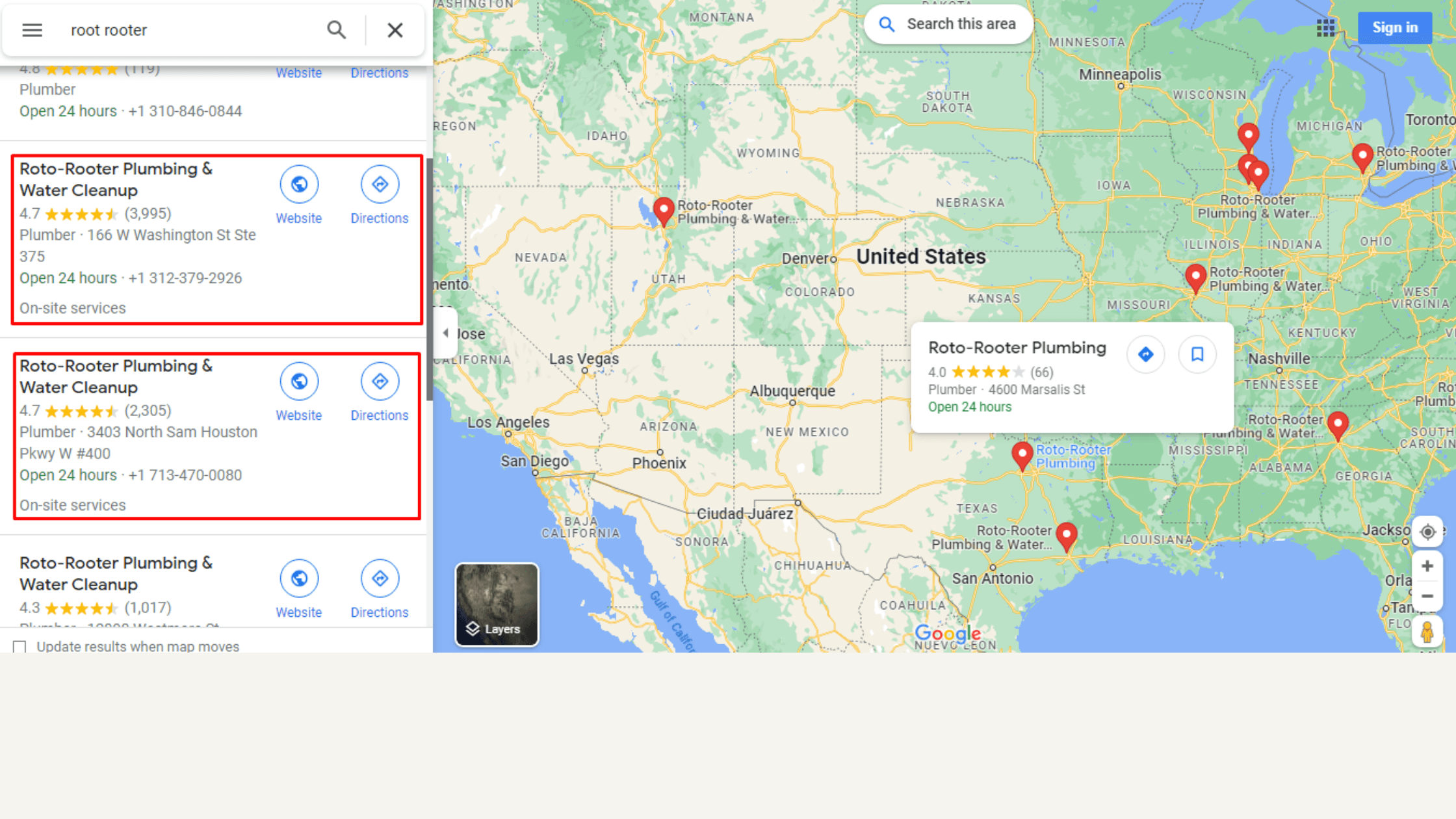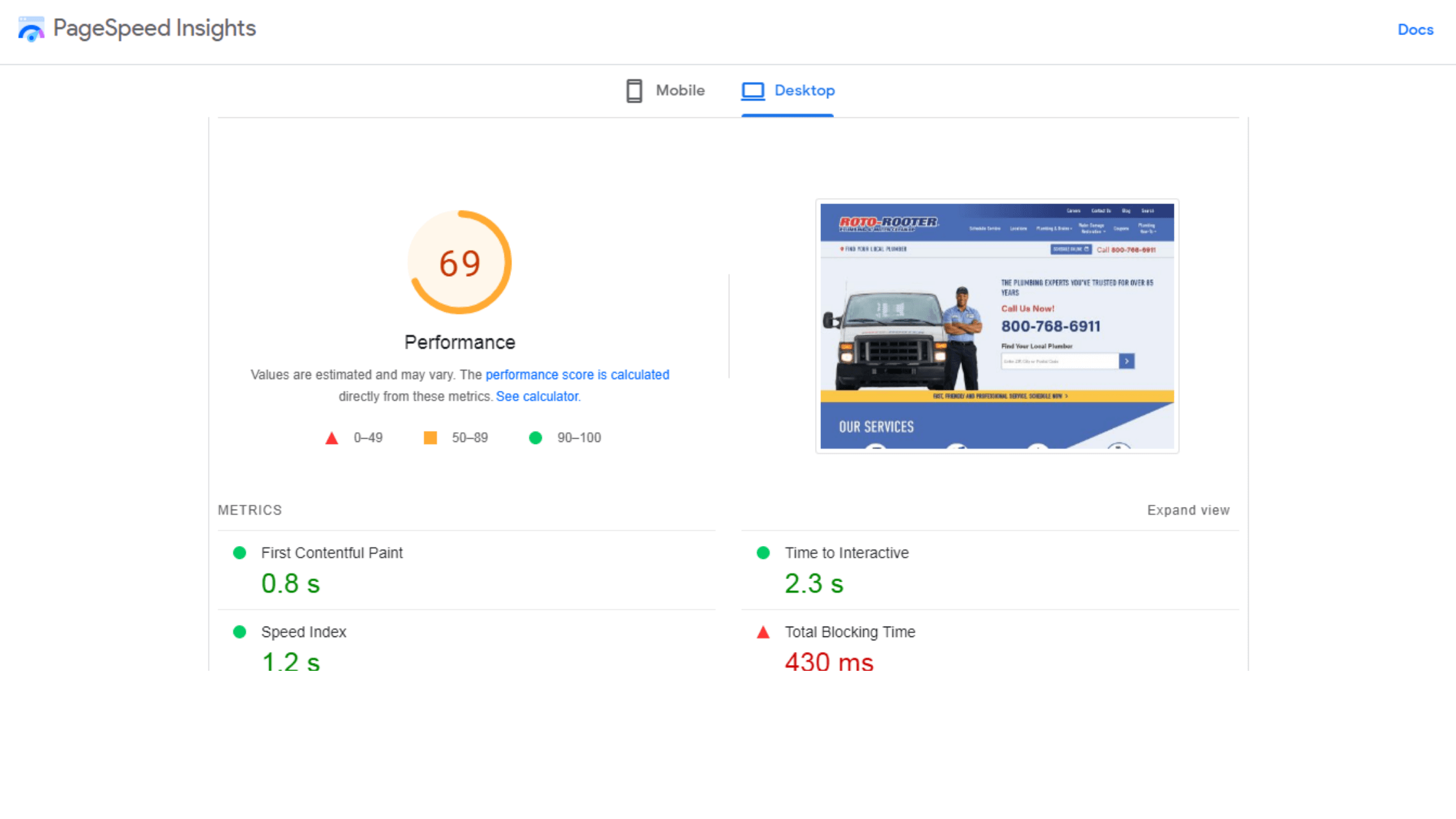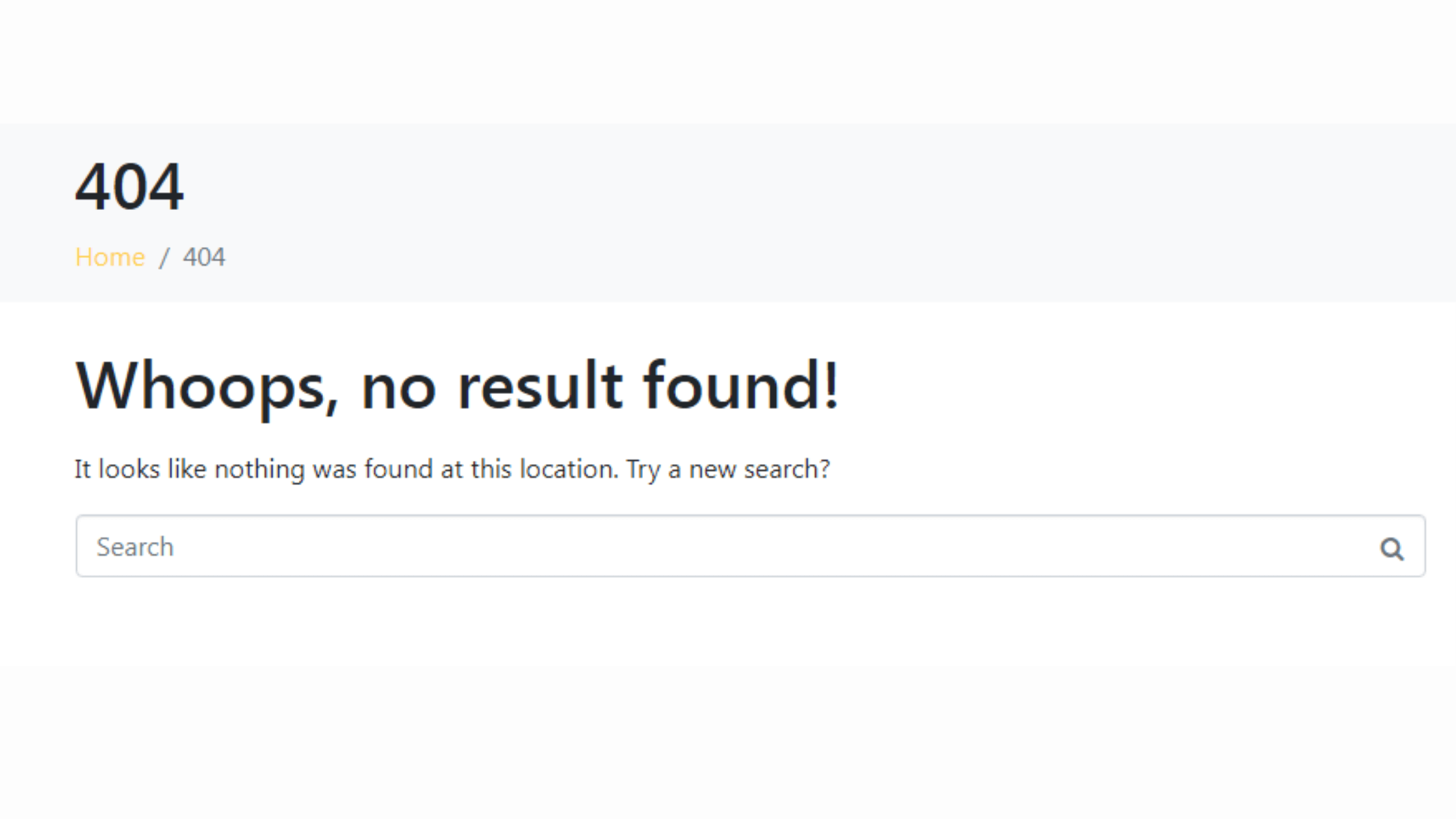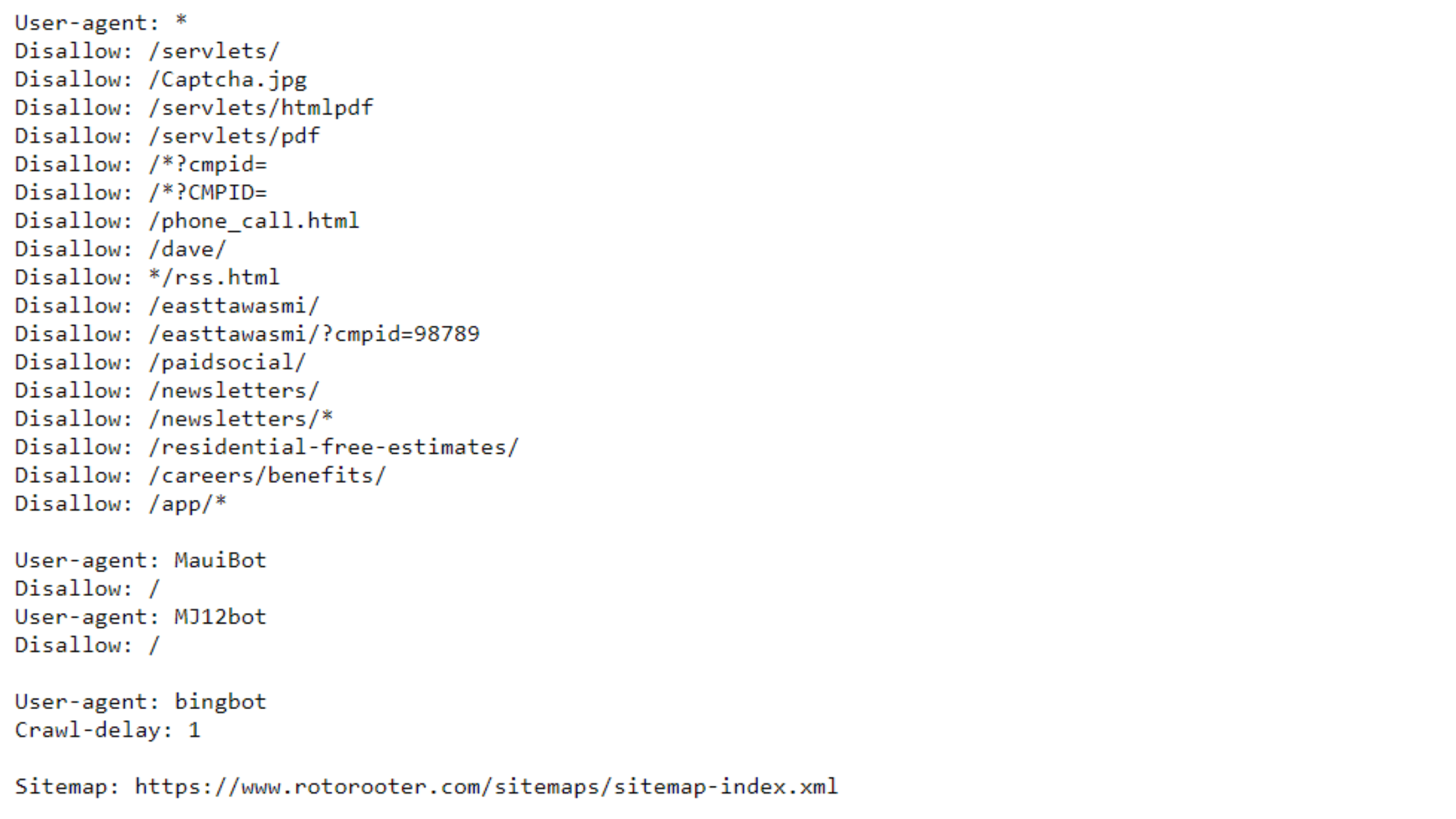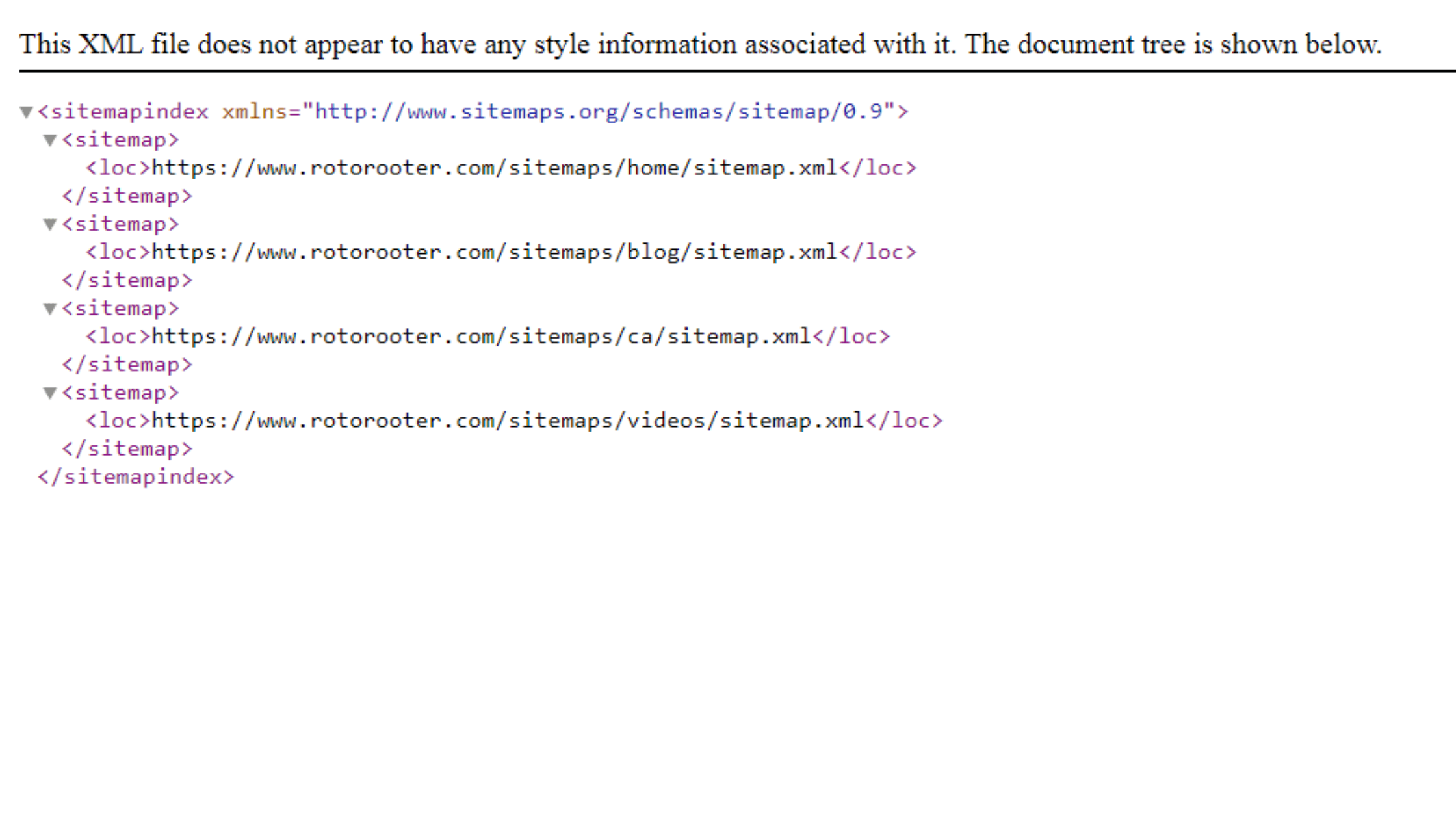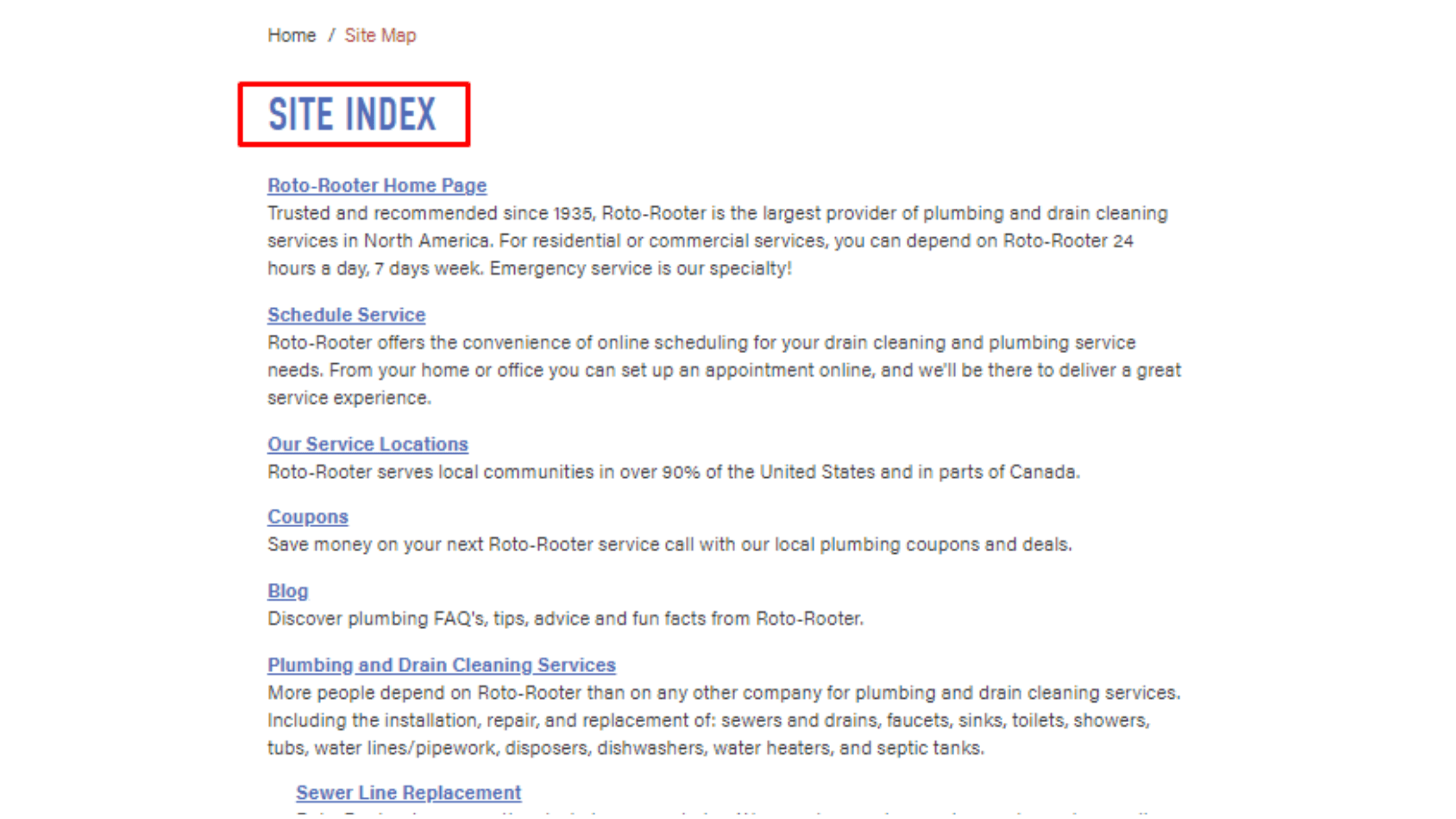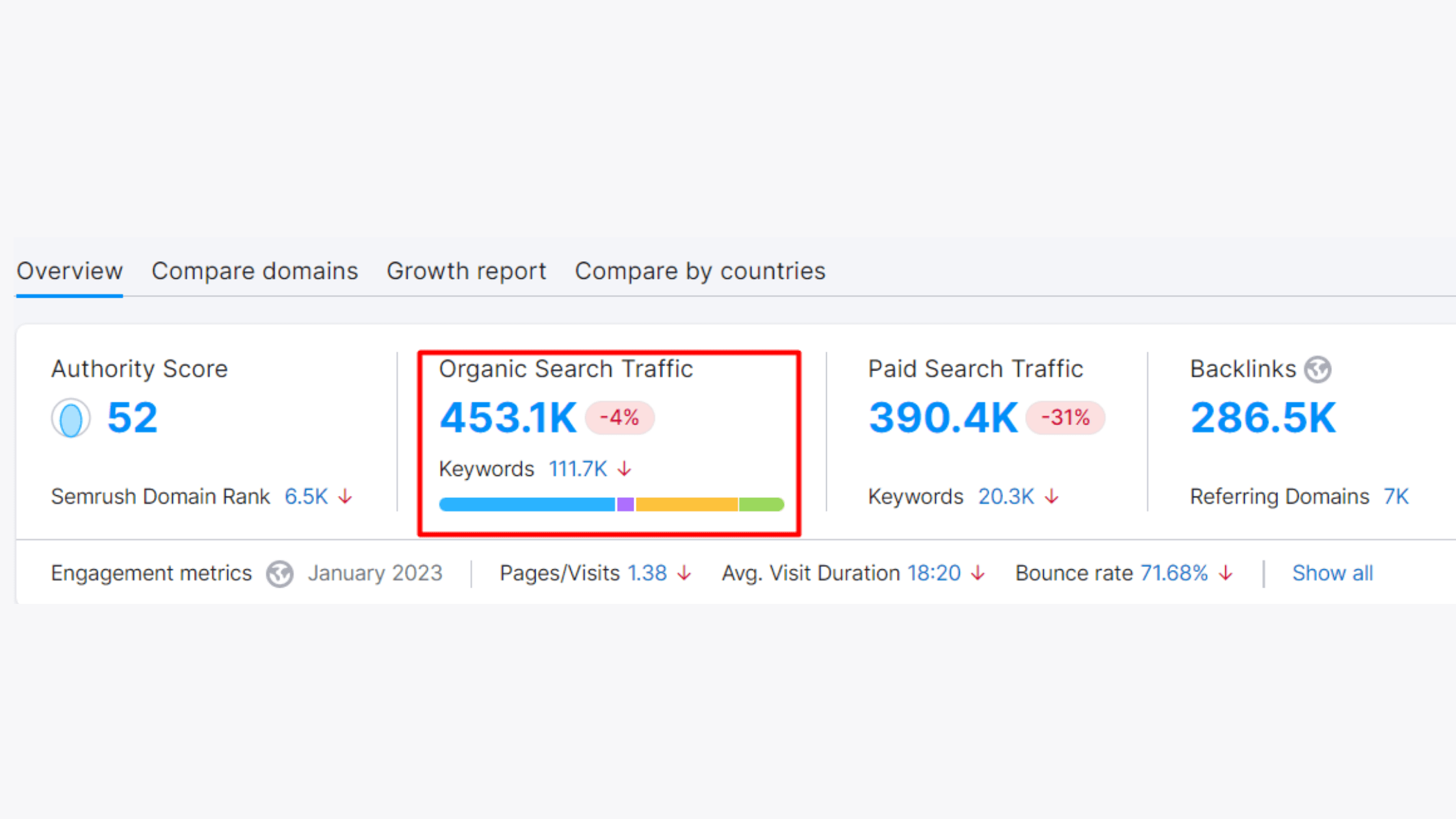SEO For Plumbing Business
This guide will provide you with the essential information you need to understand how SEO works for plumbing business and how to use it to your advantage.
We’ll cover topics such as keyword research, content optimization, technical optimization, some best practices, and more.
With this guide, you’ll be able to create an effective SEO strategy that will help your plumbing business reach its full potential.
This guide will introduce you to:
- The basics of SEO and its importance for plumbing businesses.
- Essential elements for a successful SEO strategy for plumbing companies.
- A step-by-step process to optimizing your plumbing business website.
- How to research and select keywords to improve your SEO.
- Techniques for improving both on-page and local SEO for plumbing businesses.
- Essential technical SEO considerations for plumbing companies.
- Building authority and credibility for your plumbing business website.
- Utilizing your Google Business profile to enhance your local SEO.
- Monitoring and measuring the progress of your SEO efforts.
Let our expert determine what's wrong with your Plumbing SEO

Chapter 1
Introduction

Chapter 2
SEO Strategy

Chapter 3
Keywords Research

Chapter 4
On-Page SEO
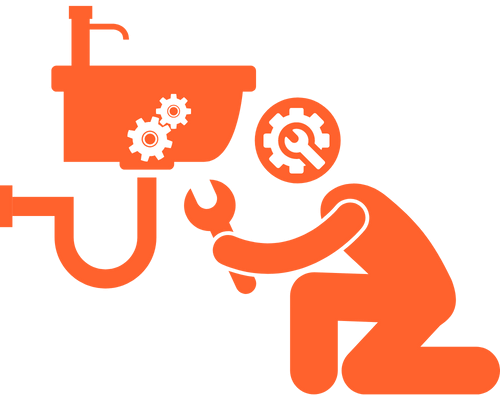
Chapter 5
Technical SEO
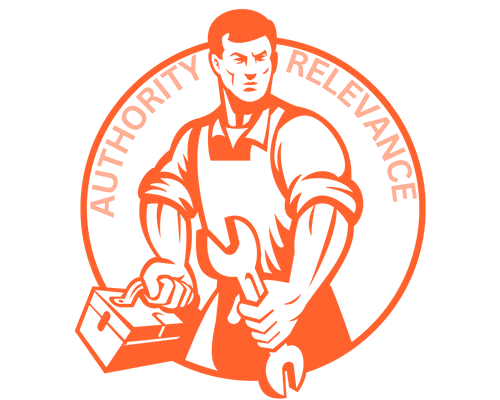
Chapter 6
Authority Building
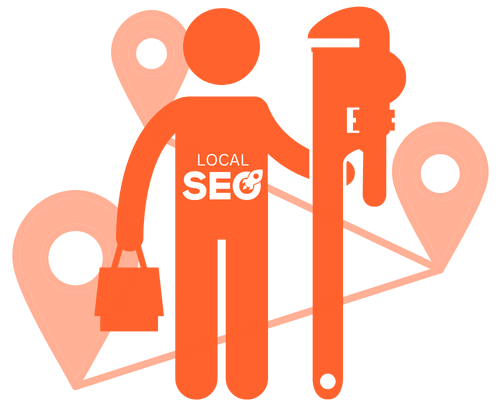
Chapter 7
Local Listing

Chapter 8
Reviews
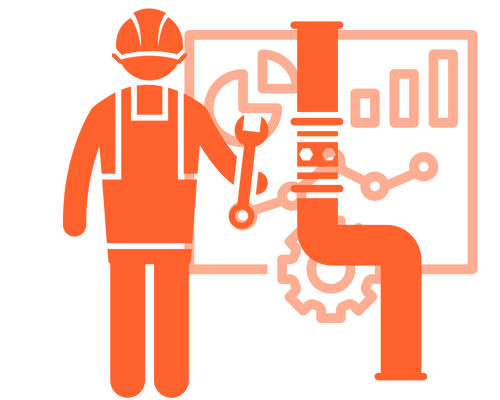
Chapter 9
Track SEO progress
Chapter 1:
Quick Introduction to Plumbing SEO
In this chapter, we will dive into the world of plumbing SEO and understand its importance in today’s digital landscape.
As a plumbing business owner or professional, it’s crucial to have a strong online presence to reach a wider audience and attract more potential customers.
This is where plumbing SEO comes into play.

What is SEO for plumbers?
SEO, or search engine optimization, is the process of improving the visibility and ranking of a website in search engine results pages (SERPs).
SEO for plumbers is the process of optimizing a plumbing business’s website and online presence to rank higher in search engine results pages (SERPs) for keywords related to plumbing services. This involves techniques such as keyword research, on-page optimization, content creation, link building, and local SEO. The goal of SEO for plumbers is to increase visibility and drive more traffic to their website, ultimately leading to more leads and conversions.
Why is SEO important for plumbing Business?
SEO is important for plumbing businesses because it can help them reach more potential customers online.
When a plumbing business ranks well in search results, it is more likely to attract website visitors who are searching for plumbing services in their area.
As a result, the plumbing company can generate more leads and eventually, more business.
Also, the following are some important factors that can’t be ignored and helps in the plumbing business. They are:
- Increased Visibility: SEO helps plumbing businesses to rank higher in search engines, making it easier for potential customers to find them.
- Targeted Traffic: SEO helps plumbing businesses to reach the right audience by targeting keywords related to their services. This leads to increased traffic from users who are searching for plumbing services.
- Cost-Effective Marketing: SEO is a cost-effective marketing method compared to traditional advertising methods. It allows plumbing businesses to reach a large audience without the need for large ad budgets.
- Build Trust and Credibility: High rankings in search engines help to build trust and credibility with potential customers. A plumbing business that ranks well for relevant keywords is more likely to be seen as a reputable and reliable provider of services.
- Stay Ahead of the Competition: SEO helps plumbing businesses stay ahead of the competition by improving their online visibility and reach. This can give them a competitive edge in a crowded market.
Need of SEO for Plumbing Business in Today’s Trend
Plumbing businesses still need SEO today. While the specific tactics and strategies involved in SEO may change over time, the importance of being visible in search results remains the same. With more and more people using the internet to find local businesses, it is essential for plumbing companies to have a strong online presence, including a well-optimized website that ranks well in search results.
In summary, SEO for plumbing businesses involves improving the visibility and ranking of a plumbing company’s website in search results, in order to attract more potential customers and drive more business. It is an important part of any online marketing strategy, and it is still relevant today.
Chapter 2:
A Comprehensive SEO Strategy for Plumbing Websites
In today’s digital age, having a strong online presence is crucial for any business. The plumbing industry is no exception.
A plumbing website with a well-executed SEO strategy can help attract potential customers, establish credibility, and increase overall visibility.
This chapter will provide an overview of the importance of SEO for plumbing websites and offer practical tips on how to optimize your website to improve your search engine ranking and drive traffic to your site. Whether you’re a seasoned marketer or just getting started, this chapter will help you understand the key elements of a successful SEO strategy for plumbing websites.

An advanced SEO strategy for plumbing websites would involve implementing a variety of tactics to improve the search engine ranking and visibility of the website.
Let’s see some potential tactics:
Optimizing for voice search
As more and more people use voice assistants to search the web, it’s important to optimize your website for this type of search. This can involve using long-tail keywords and natural language phrases, as well as providing clear and concise information that is easy for voice assistants to understand.
Using animated images to improve time on site:
Adding engaging and visually appealing images to your website can help to keep visitors on the site longer, which can be a positive signal to search engines. Animating these images can make them even more engaging and attention-grabbing.
Creating a pillar content:
Pillar content refers to long-form, in-depth pieces of content that cover a particular topic in detail. These types of articles can be used as a foundation for other, more specific pieces of content, and can help to establish your website as a thought leader in your industry.
Below is the structure of a pillar content
Targeting comparison keywords:
Comparison keywords are phrases that allow people to compare different products or services.
For example, a plumbing website might target keywords like:
“tankless water heater vs. traditional water heater”
or
“sewer line replacement cost comparison.”
By optimizing for these types of keywords, you can help potential customers make informed decisions about their plumbing needs.
Building backlinks with podcasts:
Podcasts can be a great way to build backlinks to your website. By being a guest on a popular podcast in your industry, you can drive traffic to your site and gain valuable backlinks.
Forging a content alliance:
A content alliance is a partnership between two or more plumbing websites in which they agree to cross-promote each other’s content. This can be a good way to build backlinks and drive traffic to your site.
The goal of this alliance is to establish each participating website as an authoritative source for plumbing information and to improve the visibility of the websites in search engines.
By pooling resources and knowledge, members of the alliance can create comprehensive, well-researched pillar content that covers a wide range of plumbing topics and supporting cluster articles that delve into specific areas in more detail.
The resulting high-quality content can help to attract and engage users, drive traffic to each website, and build trust with users and search engines alike.
Maximizing SERP space:
Space on a search engine results page that is taken up by a website’s listing. There are a number of tactics you can use to maximize your SERP space, such as using structured data and different schemas such as FAQ, Q&A, How to, etc.
Structured data refers to the data that is organized in a well-defined format, such as a table or a database, with specific fields and types of information.
In the context of search engine results pages (SERPs), structured data helps search engines understand the content of a website and can be used to enhance the display of a website’s information in search results.
- FAQPage: The FAQPage schema is used to provide information about a page that contains a list of frequently asked questions.
- Q&A: Similar to the FAQ schema, the Q&A schema provides information about a question and its answer.
- HowTo: The HowTo schema provides information about a step-by-step process for completing a task.
Optimizing your content for search intent:
Search intent refers to the purpose or goal that someone has when searching for a particular keyword or phrase. By understanding the intent behind a search term, you can optimize your content to better match what people are looking for, which can improve your search engine ranking.
Don’t Ignore “people also ask” keywords:
The “people also ask” feature on Google displays a list of related questions that people often search for in conjunction with a particular keyword.
By identifying and targeting these keywords, you can improve your search engine visibility and drive more traffic to your site.
Optimizing for Google Discover:
Google Discover is a feature that shows personalized content recommendations to users based on their interests and search history. By optimizing your website for Discover, you can increase the chances that your content will be recommended to users.
Upgrading existing content:
If you have older content on your website that is no longer performing well, consider updating it with fresh information and new insights. This can help to improve your search engine ranking and keep your content relevant to your audience.
Running a content audit and removing underperforming content:
A content audit involves reviewing all of the content on your website and evaluating its performance. By identifying and removing underperforming content, you can improve the overall quality and effectiveness of your website.
Finding and fixing keyword cannibalization issues:
Keyword cannibalization occurs when multiple pages on a website are targeting the same keyword, which can dilute the effectiveness of the website’s SEO efforts.
To fix this issue, you can identify which pages are competing for the same keyword and either modify the content on those pages to target different keywords or consolidate the pages into a single, more comprehensive piece of content.
Mastering internal linking:
Internal linking is the process of linking to other pages on your website from within your own content.
This can help to improve the user experience and make it easier for search engines to crawl and index your site.
By mastering internal linking, you can help to improve the overall SEO of your website.
Optimizing for featured snippets:
Featured snippets are short, concise pieces of content that appear at the top of the search results page in response to certain queries.
By optimizing your content for featured snippets, you can increase the chances that your website will be chosen to be displayed in this highly visible position.
Stealing links that point to competitor’s 404s:
When other websites link to a page on your competitor’s website that no longer exists (a 404 error page), you can try to steal those links by creating a similar page on your own website and reaching out to the websites linking to your competitor’s 404 page to let them know about your similar page. This can help to build backlinks to your website.
Tips:
By following these steps and continually reviewing and refining your keyword strategy, you can effectively target the keywords that are most relevant to your business and improve your search engine visibility.
There are several types of featured snippets:
1. Paragraph snippets:
These are the most common type of featured snippets. Google displays a brief summary of the answer to the user’s query in a paragraph format. These snippets are typically pulled from a single web page.
2. List snippets:
When a user’s query is looking for a list of items, Google may display a list snippet.
These snippets will typically show the list of items in bullet or numbered form.
3. Table snippets:
Table snippets display information in a tabular format.
These snippets are often used for comparisons or when presenting data.
4. Video snippets:
Video snippets feature a video thumbnail that can be clicked to play a video relevant to the user’s query.
5. Image snippets:
When a user’s query is looking for a visual reference, such as a product or a landmark, Google may display an image snippet.
These snippets will show an image and some basic information about it.
Chapter 3:
Unlocking the Power of Keyword Research for Plumbing Websites
In this chapter, we will delve into the essential aspect of keyword research for plumbing websites.
Keyword research is a crucial component of search engine optimization (SEO) and is the process of identifying keywords and phrases that potential customers use to search for plumbing services online.
By understanding and targeting these keywords, plumbing websites can increase their visibility and attract more relevant traffic to their site.
This chapter will cover the importance of keyword research, how to conduct effective keyword research, and tips for selecting the best keywords for your plumbing website.

Keyword research is the process of identifying the words and phrases that people use when searching for products or services related to your business. By understanding the keywords that potential customers are using, you can optimize your website and marketing efforts to better target those keywords and increase your visibility in the search results.
To do keyword research for a plumbing business, you can follow these steps:
Identify your target audience:
The first step in keyword research is to identify your target audience. Consider who your ideal customers are, what their needs and preferences are, and what types of questions they might be asking when searching for plumbing services.
Brainstorm a list of keywords:
Once you have a good understanding of your target audience, you can start brainstorming a list of keywords that they might be using when searching for plumbing services.
This list can include specific services that you offer, such as:
“drain cleaning,” “sewer line repair,” or “water heater installation.”
It can also include more general keywords that relate to your business, such as:
“plumber” or “plumbing company.”
Use a keyword research tool:
There are a number of keyword research tools that can help you identify additional keywords and get an idea of their search volume and competition level.
Some popular options include Google’s Keyword Planner, SEMrush, and Ahrefs.
These tools can provide valuable insights into the keywords that are most relevant to your business and that have the potential to drive traffic to your site.
Analyze the competition:
In addition to identifying relevant keywords, it’s important to understand the level of competition for those keywords. This will help you determine which keywords are realistic targets for your business. You can use a keyword research tool to see how well your competitors are ranking for specific keywords and get an idea of how difficult it might be to rank for those keywords yourself.
Prioritize your keywords:
Once you have a list of potential keywords, you can start prioritizing them based on their relevance and potential value to your business. Consider which keywords are most important to your business goals and focus on those first.
For example, a plumbing business might prioritize the following keywords:
| Keyword | Search Volume | Relevancy |
| emergency plumbing services | High | Highly relevant |
| drain cleaning | High | Medium Relevant |
| sewer line repair | Medium | Highly relevant |
| plumber near me | High | Low Relevant |
By targeting these keywords and optimizing your website and marketing efforts for them, you can increase your visibility in the search results and attract more potential customers to your business.
Use your keywords in your website content:
Once you have identified and prioritized your keywords, it’s important to use them in your website content in a natural and relevant way.
This can include incorporating them into your page titles, headlines, and body copy.
It’s also a good idea to use variations of your keywords, as this can help to broaden your reach and improve your chances of ranking for a variety of related terms.
Monitor and adjust your keyword strategy:
Keyword research is an ongoing process, and it’s important to regularly monitor and adjust your keyword strategy as needed.
This can involve adding new keywords to your list, revising your content to better target your keywords, or shifting your focus to different keywords based on changes in search trends or your business goals.
For example, a plumbing business might initially focus on targeting keywords related to emergency plumbing services, but over time, they may find that they are getting more traffic and leads from keywords related to drain cleaning.
In this case, they may want to adjust their keyword strategy to place more emphasis on drain cleaning keywords.
By following above steps and continually reviewing and refining your keyword strategy, you can effectively target the keywords that are most relevant to your business and improve your search engine visibility.
Chapter 4:
On-Page Optimization for Plumbing Websites
On-page optimization is the process of optimizing individual web pages in order to rank higher and earn more relevant traffic in search engines.
This chapter will focus on how to optimize plumbing websites for search engines through various on-page optimization techniques, including keyword research, meta descriptions, header tags, and content optimization.
By following these guidelines, plumbing websites can improve their search engine visibility and attract more qualified leads for their plumbing services.

Optimizing your website for local search:
Local search in SEO refers to the process of optimizing a website or business’s online presence for the purpose of ranking higher in search engine results pages (SERPs) for searches related to the business’s physical location.
This helps businesses attract more local customers who are searching for products or services in their area.
Techniques for optimizing local search include using keywords related to the business’s location, creating a Google Business Profile listing, and building local citations (mentions of the business’s name, address, and phone number on other websites).
Here is a breakdown of each point and how you can optimize these SEO practices for a plumbing business.
Have a good solid homepage, contact, and about page:
The homepage, contact, and about pages are some of the most important pages on your website, as they provide information about your business and how to get in touch with you.
Make sure these pages are well-designed, easy to navigate and provide valuable information to your visitors.
For example, your homepage might include a brief overview of your business and the services you offer, as well as a call to action to encourage visitors to contact you or learn more about your services.
Your contact page should include your business’s full name, address, phone number, and email, as well as a map and directions to your location.
Your about page should provide more detailed information about your business, such as its history, mission, and values.
Include full NAP on the contact page:
NAP stands for “name, address, phone number,” and it’s important to include this information on your website so that search engines can verify that your business is legitimate and provide accurate information to users.
Make sure to include your business’s full name, address, and phone number on your contact page, and ensure that this information is consistent with any other online listings or directories that you may be listed in.
For example, if your business is called “John’s Plumbing,” make sure that your contact page includes “John’s Plumbing” as your business name, rather than just “John’s” or “Plumbing.”
This will help search engines understand that the information on your contact page is relevant to your business.
Add a Google Map to the contact page:
A Google Map on your contact page can help visitors easily find your location and get directions to your business. To add a Google Map to your website, you can use the Google Maps API or a plugin like the Google Maps Widget.
For example, you might add a Google Map to your contact page that shows your business’s location and provides a link to get directions. This can be especially helpful for visitors who are unfamiliar with the area or who are looking for a quick and easy way to find your business.
Optimize your content for local search:
There are a number of ways you can optimize your content for local search, including your location in the URL, meta tags, and H1 tags, as well as incorporating local keywords and references into the body of your content.
For example, you might include your city and state in the URL of your location pages, such as “www.plumber.com/chicago-il.”
You might also include local keywords in your meta tags and H1 tags, such as “Chicago plumbing services” or “Plumber in Chicago.”
And you might include references to specific neighborhoods or landmarks in your content, such as “serving the Lakeview neighborhood” or “located near Wrigley Field.”
Create local landing pages:
A local landing page is a page on your website that is specifically designed to target a specific location or service area. These pages can be an effective way to rank for local keywords and attract potential customers who are searching for services in your area.
For example, you might create a local landing page for each of the neighborhoods or areas that you serve, or for specific services that you offer, such as drain cleaning or water heater installation.
These pages should include detailed information about your business, as well as local keywords and references to help improve your search engine ranking.
Avoid thin copy:
Thin copy refers to content that is lacking in depth or substance. It’s important to avoid thin copy on your website, as it can provide little value to visitors and may not be enough to rank well in the search results.
Instead, aim to create detailed and informative content that provides value to your audience and helps to establish your business as an authority in your industry.
For example, rather than simply listing the plumbing services you offer, you might create in-depth articles that provide valuable information about common plumbing issues, how to prevent them, or how to choose the right plumbing company.
This can help to establish your business as a trusted resource and improve your search engine ranking.
Make sure NAP is consistent:
It’s important to ensure that your NAP information is consistent across all of your online listings and directories. This includes your website, as well as any online directories or review sites where your business may be listed.
If there are any discrepancies in your NAP information, it can confuse search engines and make it harder for them to accurately provide information about your business to users.
For example, if your business is listed as “John’s Plumbing” on your website, but “Johns Plumbing” on a directory or review site, this can cause confusion for search engines.
Make sure to review all of your online listings and directories to ensure that your NAP information is consistent.
Make sure people can get to your location pages:
If you have multiple locations or serve specific geographical areas, it’s important to have dedicated location pages on your website that provide information about each location.
These pages should include your NAP information, as well as details about the services you offer and any other relevant information.
For example, you might have a separate location page for each of your physical locations, as well as additional location pages for the areas you serve.
These pages should be easy for visitors to find and navigate and should provide valuable information about your business and the services you offer.
Use clickable phone numbers on mobile:
On mobile devices, it’s important to use clickable phone numbers so that users can easily call your business from their phone. This can be done by using the “tel” HT
For example, on your contact page, you might include a clickable phone number like this:
<a href=”tel:123-456-7890″>123-456-7890</a>
This will allow mobile users to click on the phone number and initiate a call, rather than having to manually type the number into their phone.
Ensure your website offers a good user experience:
In addition to optimizing your website for search engines, it’s also important to focus on providing a good user experience for visitors.
This can involve making your website easy to navigate, providing valuable and relevant content, and ensuring that your website loads quickly and is mobile-friendly.
For example, you might include a clear and easy-to-use navigation menu on your website, as well as clear calls to action that encourage visitors to contact you or learn more about your services.
You might also consider using responsive design techniques to ensure that your website looks good and works well on all devices, including smartphones and tablets.
Optimize your metadata:
Metadata refers to the information that is included in the HTML code of your website but is not visible to users. This includes things like page titles, meta descriptions, and image alt tags.
Optimizing your metadata can help to improve your search engine ranking and give users a better understanding of what your website is about.
For example, you might include relevant keywords in your page titles and meta descriptions, as well as descriptive alt tags for your images.
This can help search engines understand the content of your website and provide more accurate search results to users.
Use optimized images:
Using optimized images on your website can help to improve the loading speed of your pages, as well as make your website more visually appealing to users.
This can involve compressing images to reduce their file size, using appropriate file types (such as JPEG or PNG), and providing descriptive filenames and alt tags for your images.
For example, you might include high-quality images of your plumbing services on your website, and make sure to optimize them for the web by compressing them and using descriptive alt tags.
This can help to improve the user experience and make your website more visually appealing to visitors.
Add schema to your pages:
Schema is a type of structured data that you can add to your website’s HTML code to provide additional information to search engines about the content of your pages.
This can include things like product ratings, reviews, and FAQs. Adding schema to your pages can help to improve your search engine ranking and provide more detailed information to users in the search results.
For example, you might use product schema to mark up your website’s pages with information about the plumbing services you offer, including pricing, ratings, and reviews.
This can help search engines understand the content of your pages and provide more accurate and detailed search results to users.
Create unique content for each page:
It’s important to create unique and relevant content for each page on your website. This can help to improve your search engine ranking and provide value to your visitors.
When creating content for your plumbing business, consider the unique features and services you offer, as well as any local or industry-specific information that might be relevant to your audience.
Use local keywords and references:
As mentioned earlier, incorporating local keywords and references into your content can help to improve your search engine ranking and attract potential customers who are searching for services in your area.
When creating content for your plumbing business, try to include local keywords and references wherever possible, such as the name of your city or specific neighborhoods or landmarks.
For example, you might include local keywords in your page titles, such as “Chicago plumbing services,” or in your content, such as “serving the Lakeview neighborhood.”
You might also include references to specific landmarks or neighborhoods in your content to help establish your business’s location and relevance to local users.
Use customer testimonials:
Customer testimonials can be an effective way to build trust and credibility with potential customers. By including testimonials on your website, you can provide social proof and show that real people have had positive experiences with your business.
For example, you might include a section on your website with customer testimonials, complete with names, photos, and quotes from satisfied customers.
You might also include a link to online reviews or ratings to provide additional social proof and credibility.
Use a content calendar:
A content calendar is a schedule or plan for creating and publishing content on your website. By using a content calendar, you can ensure that you are consistently creating and publishing new content, and can plan ahead to cover topics or themes that are relevant to your business.
For example, you might use a content calendar to plan out a series of blog posts or articles about common plumbing issues and how to prevent them.
This can help to provide value to your audience and keep your website up to date with fresh, relevant content.
Remove any duplicate content:
Duplicate content is content that is identical or very similar to content that appears on other websites.
Having duplicate content on your website can harm your search engine ranking and confuse search engines about which version of the content is the original.
To avoid this issue, make sure to remove any duplicate content from your website and ensure that all of your content is unique and original.
Include local photos and videos:
Including local photos and videos on your website can help to personalize your business and make it more relatable to potential customers.
You might include photos of your business or your team, or videos that show your services in action.
For example, you might include a gallery of photos on your website that show your team working on different plumbing projects or a video that demonstrates how to use a particular plumbing tool or technique.
This can help to make your business more visible and engaging to potential customers.
Use location-specific promotions:
Offering location-specific promotions or discounts can be an effective way to attract local customers and encourage them to choose your business.
You might consider offering promotions or discounts to customers in specific neighborhoods or areas, or for specific services that you offer.
For example, you might offer a discount on drain cleaning services for customers in a particular neighborhood or a free plumbing inspection for customers in a specific zip code.
By offering these promotions, you can encourage potential customers to choose your business over competitors and drive more traffic to your website.
Citations for Plumbing Local SEO
A citation is a mention of a business, referencing your business’s name, address, and phone number (NAP) on other websites.
They play a significant role in local SEO, as they help search engines verify the accuracy and consistency of a business’s NAP information.
Additionally, citations can also help boost a business’s visibility in local search results, as search engines use them as a signal of a business’s relevance and authority in a given location.
Just like links to your website, Google uses citations to calculate the online authority of your business site.
However, unlike links, citations don’t need to be linked to your website. You will still receive the benefit of them via your NAP.
Here’s what to keep in mind when it comes to citations for local SEO:
Use the accurate name, address, and phone(NAP):
Citations are mentions of your business’s name, address, and phone number (NAP) on other websites. It’s important to ensure that your NAP information is accurate and consistent across all of your citations, as this can help to improve your search engine ranking and provide accurate information to potential customers.
For example, if your business is called “John’s Plumbing,” make sure that all of your citations list your business as “John’s Plumbing,” rather than variations such as “John’s Plumbers” or “John’s Plumbing Services.”
This will help search engines understand that the citations are relevant to your business and improve your ranking.
Build citations for every physical location you have:
If you have multiple physical locations, it’s important to build citations for each location. This can help to improve your search engine ranking and make it easier for customers to find your business.
For example, if you have a plumbing business with locations in Chicago, IL and Milwaukee, WI, you might build citations for each location, including your business’s NAP information and a link to the corresponding location page on your website.
This can help search engines understand that you have multiple locations and improve your ranking for local search.
Link to the right location page:
When building citations for your business, it’s important to link to the correct location page on your website. This can help to improve the user experience and provide more accurate information to potential customers.
For example, if you have a citation for your Chicago location, you might include a link to the Chicago location page on your website, rather than linking to your homepage or a generic location page.
This can help visitors find the information they are looking for more easily and improve their experience on your website.
Perform a citation audit:
A citation audit is a review of all of the citations for your business, including directories, review sites, and other online listings.
Performing a citation audit can help you identify any duplicated or incorrect listings, and allow you to clean up your citations and improve your search engine ranking.
For example, you might use a tool like Moz Local to review all of your citations and identify any duplicates or errors.
You can then use this information to clean up your citations and improve the accuracy and consistency of your NAP information across all of your listings.
Do a competitor citation analysis:
Performing a competitor citation analysis can help you identify which directories and review sites your competitors are listed on and allow you to get listed on these sites as well.
This can help to improve your search engine ranking and increase your visibility to potential customers.
For example, you might use a tool like Ahrefs or SEMrush to review the citations of your competitors and identify any directories or review sites that they are listed on but you are not.
You can then create listings on these sites to improve your own citation profile and increase your visibility to potential customers.
List your business on local directories:
Local directories are online directories that focus on businesses in a specific location or region. Listing your business on local directories can help to improve your search engine ranking and increase your visibility to potential customers who are searching for services in your area.
For example, you might list your business in the directories listed below. These directories are popular with consumers and can help to improve your ranking for local search.
List your business on niche directories:
Niche directories are online directories that focus on specific industries or types of businesses. Listing your business on niche directories can help to increase your visibility to potential customers who are interested in your specific services.
For example, if you run a plumbing business, you might list your business on directories such as HomeAdvisor or Thumbtack, which are popular with homeowners looking for home improvement services.
You might also list your business on industry-specific directories, such as the Plumbing-Heating-Cooling Contractors Association (PHCC) directory.
Some examples of directory and citation sites for plumbing businesses include:
- Yelp
- Yellow Pages
- Google Business Profile
- HomeAdvisor
- Thumbtack
- PHCC directory (Plumbing-Heating-Cooling Contractors Association)
- Angie’s List
- Superpages
- Manta
- Foursquare
- CitySearch
- Better Business Bureau
It’s important to note that while listing your business on directories and citation sites can be beneficial for local SEO, it’s also important to focus on building high-quality, relevant backlinks from authoritative websites.
This can help to improve your overall search engine ranking and increase the credibility and authority of your business.
Chapter 5:
Technical SEO Factors for Optimal Plumbing Website Performance
In this chapter, we will examine the various technical SEO factors that play a crucial role in optimizing plumbing websites.
Technical SEO refers to the behind-the-scenes optimization strategies that help websites rank higher in search engine results. These strategies include website structure, content optimization, and technical elements such as website speed, security, and mobile responsiveness.
This chapter will provide insight into these essential technical factors that plumbing websites must implement to improve their online visibility and attract more customers.

Technical SEO is critical for plumbing websites as it affects the website’s ability to rank in search engines, attract and retain visitors, and ultimately generate leads and sales.
Here is a breakdown of each technical SEO factor and how it can apply to a plumbing business:
Website speed:
Website speed refers to how quickly your website loads and displays content to visitors.
A slow website can negatively impact your search engine ranking and user experience.
To optimize your website speed, you might consider using techniques such as compressing images, minifying HTML, CSS, and JavaScript, and using a content delivery network (CDN).
For example, you might use a tool like GTmetrix to analyze your website’s speed and identify opportunities for optimization.
You might then implement techniques such as image compression and minification to improve your website’s loading speed.
Optimize core web vitals:
Core web vitals are a set of performance metrics that Google uses to evaluate the user experience of a website.
These metrics include things like loading speed, interactivity, and visual stability.
Optimizing your core web vitals can help to improve your search engine ranking and provide a better user experience.
For example, you might use a tool like PageSpeed Insights to analyze your website’s core web vitals and identify areas for improvement.
You might then implement techniques such as optimizing images and reducing the number of elements on your pages to improve your core web vitals.
Mobile-friendliness:
Mobile-friendliness refers to how well your website performs and looks on mobile devices. With the increasing prevalence of mobile devices, it’s important to ensure that your website is mobile-friendly to improve your search engine ranking and provide a good user experience.
For example, you might use a tool like Google’s Mobile-Friendly Test to analyze your website’s mobile performance and identify any issues.
You might then implement techniques such as using responsive design or a mobile-specific website to improve your website’s mobile friendliness.
Resolve canonical www to non-www canonical issue:
A canonical issue occurs when search engines see the same content on multiple URLs as separate pages, rather than as a single page.
This can lead to duplicate content issues and confuse search engines about which version of the content is the original.
To resolve a canonical issue, you need to specify the preferred version of the content using a rel=”canonical” tag or redirect.
For example, if you have a plumbing business and your website has both www and non-www versions (e.g. www.plumber.com and plumber.com), you might choose to use the non-www version as the preferred version.
You can then use a rel=”canonical” tag or redirect to specify the non-www version as the preferred version for search engines.
This can help to avoid duplicate content issues and improve your search engine ranking.
Review 301 redirect issue:
A 301 redirect is a type of redirect that tells search engines that a page has permanently moved to a new URL. Using 301 redirects can help to preserve your search engine ranking and avoid broken links when you change the URL of a page on your website.
For example, if you have a plumbing business and you want to change the URL of one of your service pages from “www.plumber.com/drain-cleaning” to “www.plumber.com/services/drain-cleaning,” you might use a 301 redirect to redirect traffic from the old URL to the new URL.
This can help to preserve your search engine ranking and avoid broken links for users.
Optimize HTTPS version:
HTTPS (Hypertext Transfer Protocol Secure) is a secure version of the HTTP protocol used to transmit data over the internet. Using HTTPS can help to protect your website from cyber-attacks and improve your search engine ranking.
For example, you might use a tool like SSL Labs to analyze the HTTPS version of your website and identify any issues.
You might then implement techniques such as installing an SSL certificate or upgrading to a more secure version of HTTPS to improve your website’s security and search engine ranking.
Check for broken links:
Broken links are links on your website that lead to pages that no longer exist or return an error. Having broken links on your website can harm your search engine ranking and provide a poor user experience.
To fix broken links, you need to identify and fix the links that are causing the issue.
For example, you might use a tool like Dead Link Checker to scan your website for broken links.
You can then use the tool’s report to identify the broken links and fix them by updating the link to a new URL or removing the link entirely.
Optimize 404 page:
A 404 page is a page that is displayed to users when they try to access a URL that does not exist or has been removed.
An optimized 404 page can help to improve the user experience and reduce the likelihood of users leaving your website.
For example, you might create a custom 404 page for your plumbing business that includes a search bar, links to your most popular pages, or a form for users to request more information.
This can help to keep users on your website and improve their experience, even if they encounter a broken link or missing page.
Optimize robot.txt file:
The robot.txt file is a text file that specifies which pages or files on your website should not be crawled by search engines.
Optimizing your robot.txt file can help to improve your search engine ranking and protect sensitive information on your website.
For example, you might use the robot.txt file to block search engines from crawling pages on your website that contain sensitive or confidential information, such as client login pages or internal documents.
This can help to protect this information from being accessed by unauthorized users and improve your search engine ranking by ensuring that only relevant pages are being crawled.
Resolve search console error:
Search Console is a tool provided by Google that helps you monitor and maintain your website’s presence in Google search results.
If you receive an error message in Search Console, it’s important to resolve the issue to maintain your search engine ranking and avoid any negative impacts on your website’s performance.
For example, you might receive an error message in Search Console if there are issues with your website’s mobile performance, security, or crawlability.
You can use the information provided in the error message to identify the issue and take steps to fix it, such as implementing a mobile-friendly design or installing an SSL certificate.
Use required schema:
Schema is a type of structured data that helps search engines understand the content on your website. Using schema can help to improve your search engine ranking and provide more information to users about your business.
For example, you might use schema to mark up your plumbing business’s contact information, services, and reviews on your website. This can help search engines
understand the content on your website and provide more detailed and accurate information to users in search results.
Add an XML sitemap:
An XML sitemap is a file that lists all of the pages on your website and provides information about each page to search engines.
Adding an XML sitemap to your website can help to improve your search engine ranking and make it easier for search engines to crawl and index your pages.
For example, you might use a tool like XML-Sitemaps.com to create an XML sitemap for your plumbing business’s website.
You can then submit the sitemap to search engines using tools like Google Search Console to help them crawl and index your pages more effectively.
Add an HTML sitemap:
HTML sitemap is a webpage that provides an organized list of all the pages on a website.
It’s designed to help both users and search engines understand the structure and content of a website.
HTML sitemaps typically include a hierarchical structure of links, with the main sections and pages of the website listed in a logical and organized way.
They may also include additional information such as page titles, descriptions, and last modification dates.
Add robots.txt and exclude all the fluffy pages:
The robots.txt file, as mentioned earlier, is a text file that specifies which pages or files on your website should not be crawled by search engines.
Excluding fluffy pages from the robots.txt file can help to improve your search engine ranking by ensuring that only relevant pages are being crawled.
Fluffy pages refer to content that is thin, lacking substance, and not particularly useful to the user.
These types of pages are often created to target specific keywords for search engine optimization (SEO) purposes, but provide little to no value to the user beyond a brief overview of the topic.
Fluffy pages can harm a website’s SEO efforts by providing a poor user experience, leading to high bounce rates and low engagement, which can negatively affect the website’s ranking in search results.
For example, you might use the robots.txt file to block search engines from crawling pages on your website that are low-quality, irrelevant, or duplicated.
This can help to improve the overall quality and relevancy of the pages being crawled by search engines and improve your search engine ranking.
SEO friendly URLs:
SEO-friendly URLs are URLs that are optimized for search engines and users. Using SEO-friendly URLs can help to improve your search engine ranking and make it easier for users to understand the content on your website.
For example, you might use descriptive and keyword-rich URLs for your plumbing business’s pages, such as:
“www.plumber.com/drain-cleaning-services” rather than “www.plumber.com/page2.”
This can help search engines understand the content on your page and improve your ranking for relevant keywords.
Reduce the size of images:
Large image files can slow down your website and negatively impact your search engine ranking. To improve your website’s speed and ranking, it’s important to reduce the size of your images as much as possible without sacrificing quality.
For example, you might use a tool like Compressor.io to compress your images and reduce their file size. You can also consider using image formats that are more efficient, such as JPEG or PNG, rather than formats like BMP or TIFF.
All location pages are linked to from a high-level navigation menu:
Ensuring that all of your location pages are linked to from a high-level navigation menu (e.g. the main menu at the top of your website) can help to improve your search engine ranking and make it easier for users to find your location pages.
For example, you might include a “Locations” menu item in your main navigation menu that links to a page with information about all of your locations.
You can then include links to individual location pages within this page, allowing users to easily find the location information they are looking for.
Ensure your website offers a good user experience:
User experience (UX) refers to how easy it is for users to navigate and interact with your website. A good UX can help to improve your search engine ranking and increase the likelihood of users converting (e.g. contacting your business, or making a purchase).
For example, you might use a tool like Crazy Egg to analyze your website’s UX and identify any issues. You might then implement techniques such as improving the navigation, adding clear calls to action, and using responsive design to improve the UX of your website.
Optimize your crawl budget:
A crawl budget is the number of pages that search engines will crawl on your website during a given period of time. Optimizing your crawl budget can help to improve your search engine ranking by ensuring that search engines are able to crawl and index your important pages efficiently.
For example, you might use a tool like Google Search Console to monitor your crawl budget and identify any issues.
You might then implement techniques such as fixing broken links, using proper redirects, and limiting the number of low-quality or irrelevant pages on your website to optimize your crawl budget.
Setup Google Search Console & Bing Webmaster Account:
Search Console & Webmaster are tools provided by Google and Bing that allow you to monitor and maintain your website’s presence in search results. Setting up an account with Google and Bing can help to improve your search engine ranking and provide valuable insights about your website’s performance.
For example, you might use Google Search Console to monitor your website’s search performance, identify any issues, and submit your sitemap.
You can also use Bing Webmaster Tools to monitor your website’s performance on Bing search results and submit your sitemap.
Setup Google Analytics Account:
Google Analytics is a tool provided by Google that allows you to track and analyze the traffic and behavior of users on your website.
Setting up a Google Analytics account can help you to understand your website’s performance and identify opportunities for improvement.
For example, you might use Google Analytics to track the number of visitors to your website, the pages they visit, and the actions they take.
You can then use this information to identify opportunities for optimization and improve your search engine ranking.
Chapter 6:
Building Authority for Your Plumbing Website
In this chapter, we will explore the crucial aspects of building authority factors for plumbing websites. With the increasing competition in the plumbing industry, having a strong online presence is becoming increasingly important.
The building of authority factors is an essential aspect of creating a website that stands out and is trusted by potential customers.
By understanding and implementing the right authority factors, plumbing websites can establish themselves as the go-to source for plumbing solutions, build trust with their target audience, and improve their search engine rankings.
This chapter will provide an overview of the most important authority factors and how they can be leveraged to achieve success online.

Although citations should make up a big part of your local link-building for your business, don’t forget to build actual backlinks to your site too.
Authority building is the process of establishing your plumbing business as a trusted and respected leader in your local market. This can be achieved through a variety of different tactics, such as the ones you’ve listed above.
Authority building is achieved through a combination of factors, including high-quality content, backlinks from reputable websites, and a strong social media presence.
The goal of authority building is to establish a website as a trusted and reliable source of information in its industry, making it more likely to rank highly in search results for relevant keywords and phrases.
When a website has built up a strong level of authority, it becomes easier to rank for competitive keywords and attract more organic traffic.
Here’s a concise explanation of each point:
Gap-filling the citations and links of competitors:
This involves looking at the websites that link to your competitors and seeing if there are any opportunities to earn similar links for your own website.
For example, if your competitor has a high-quality resource page that links to other plumbing-related websites, you could create a similar resource page for your own website and reach out to those websites to ask for a link.
Web 2.0 blog promotion:
Web 2.0 refers to the second generation of the World Wide Web, which is characterized by increased user interactivity and collaboration.
Blog promotion involves using websites like WordPress, Blogger, and Tumblr to create and promote blog posts related to your plumbing business.
For example, you could write a blog post about common plumbing problems and how to fix them, and then promote the post on social media to attract more traffic to your website.
Profile creation:
This involves creating profiles for your plumbing business on various websites and social media platforms.
For example, you could create a Facebook page or LinkedIn profile for your business, which will help you connect with potential customers and establish your brand online.
Niche-specific skyscraper content:
Skyscraper content is a type of content that is significantly longer and more detailed than the average article on a particular topic.
Creating niche-specific skyscraper content involves writing in-depth, comprehensive articles about a particular aspect of plumbing, such as plumbing emergencies or energy-efficient plumbing systems.
Promoting this type of content can help you attract more traffic to your website and establish your business as a thought leader in the plumbing industry.
Guest posting:
This involves writing articles or blog posts for other websites in your local area that are related to plumbing business.
For example, you could write an article about the benefits of regular plumbing maintenance for a local home improvement blog.
This can help you gain exposure to a new audience and establish yourself as an expert in your field.
Partnering with other local businesses:
This involves forming partnerships with other local businesses that complement your services to improve your collective online presence.
For example, if you own a plumbing business, you might consider partnering with a local HVAC company or electrician. This can help you expand your reach and offer a wider range of services to your customers.
Using HARO to build relationships with journalists:
HARO (Help a Reporter Out) is a service that connects journalists with sources for their articles.
By signing up for HARO and offering your expertise as a plumbing business owner, you can establish relationships with local journalists and potentially get your business featured in the media.
Joining the local chamber of commerce:
The chamber of commerce is a business organization that promotes the interests of local businesses.
By joining the local chamber of commerce, you can network with other business owners in your community and potentially gain more exposure for your business.
Attending and sponsoring events:
Attending and sponsoring events in the field of SEO can be a valuable way to enhance your visibility and establish your brand as an authority in the industry.
Attending events such as conferences, trade shows, and webinars can help you stay up-to-date on the latest trends and developments in SEO, network with other professionals in your field, and gain valuable insights into the industry.
Sponsoring events can also be a useful way to increase your brand recognition and reach a wider audience.
By sponsoring an event, you can have your brand prominently displayed and have the opportunity to showcase your products and services to a captive audience.
Both attending and sponsoring events can also help you build relationships and foster partnerships with other businesses and organizations in your niche, which can be valuable for driving traffic to your website and increasing your search engine rankings.
However, it’s important to choose events that are relevant to your target audience and align with your brand’s goals and values.
Using classifieds to promote your location-specific services:
Classifieds are ads that are placed in newspapers or online to promote products or services.
By placing classified ads in local publications or on websites like Craigslist, you can promote your plumbing business to a targeted audience in your local area.
Link earning through pillar pages:
A pillar page is a long-form, comprehensive piece of content that covers a specific topic in detail.
Link earning through pillar pages involves creating high-quality pillar pages on your website and promoting them in order to earn backlinks from other websites.
These backlinks can help improve the authority and credibility of your website in the eyes of search engines, which can lead to higher search rankings and more traffic.
For example, let’s say you own a plumbing business in Chicago. You could create a pillar page on your website about the history of plumbing in Chicago and the different types of plumbing systems used in the city.
You could then promote this page by reaching out to local history or architecture blogs and asking them to link to your page.
This could help improve the authority of your website and make it more visible to potential customers in the Chicago area.
Chapter 7:
Boosting Your Visibility by Setting Up Your Google Business Profile for Plumbing Websites
In today’s digital age, having an online presence is crucial for businesses to reach and engage with potential customers.
For plumbing websites, creating a Google Business Profile can be a valuable tool to increase visibility, showcase services, and receive positive reviews.
This chapter will explore the steps and benefits of creating a Google Business Profile, and how it can impact the success of a plumbing website.
Whether you’re a small, local plumbing business or a large, multi-location service, a Google Business Profile can help you stand out and reach your target audience.

Google Business Profile is a free tool offered by Google that allows businesses to manage their online presence across Google, including Search and Maps.
By setting up and verifying a Google Business Profile listing, businesses can control how their information appears to customers, including their business name, address, phone number, website, and hours of operation.
Having a Google Business Profile listing can also help improve your local search engine rankings, as Google uses this information to display your business in relevant search results for your location and industry.
This can make it easier for potential customers to find and learn more about your business and can increase the likelihood of them visiting your website or physical location.
In addition to providing important information about your business, Google Business Profile also offers a number of features, such as the ability to post updates, upload photos, respond to customer reviews, and see insights into how customers are interacting with your listing.
Overall, Google Business Profile is an essential tool for businesses looking to improve their online visibility and reach more customers through search.
Here is an example of how you can optimize your Google Business Profile (GBP) listing for a plumbing business called “Gill More Plumbing”:
Claim your listing:
First, go to the GBP website and search for “Gill More Plumbing”. If you find your business listed, click on it and follow the prompts to claim it.
If you don’t find your business listed, click on the “Add your business” button and follow the prompts to add it.
Verify your listing:
After you claim your GBP listing, you will need to verify it. This may involve receiving a postcard with a verification code or verifying your listing by phone.
Follow the prompts provided by Google to complete the verification process.
Fix up any duplicate listings:
If you find that there are multiple listings for “Gill More Plumbing” on GBP, you will need to fix this issue. You can either merge the duplicate listings or request that one of the listings be removed.
Add accurate data to your listing:
Make sure to include accurate information about your plumbing business on your GBP listing, including your business name, address, phone number, and website.
You should also include a description of the services you offer, such as plumbing repairs, installations, and maintenance.
Add your physical address:
If your plumbing business has a physical location that customers can visit, make sure to include your address on your GBP listing.
For example, you might include your address as “123 Main Street, Anytown, USA”. This will make it easier for customers to find your business and can help improve your search rankings.
Create unique GBP listings for each location:
If you have multiple locations for your plumbing business, create a unique GBP listing for each location.
For example, if you have a location in both Anytown and Another Town, you should create separate GBP listings for each location. This will help ensure that customers can easily find the correct location when searching for your business.
By following these steps, you can optimize your GBP listing and improve your plumbing business’s online visibility. Remember to regularly review and update your GBP listing to ensure that all of the information is accurate and up-to-date.
If you operate a business from multiple locations create your own listings. Be sure to create a separate GBP for each physical location you have.
We use these terms in Branches Business or Available multiple branches in one city.
Store/store Code: Code for identifying the branches.
Label: Name of Branches: This show only the owner.
Name of multiple listings should be the same:
Make sure that all of your GBP listings for “MC Plumbing” use the same business name.
This will help customers easily identify your business and can improve your search rankings.
Addresses must be different and accurate:
Each GBP listing for “MC Plumbing” should have a unique and accurate physical address.
For example, if you have locations in Anytown and Anothertown, you should create separate GBP listings for each location and include the correct address for each one.
Category should be the same:
Choose the same category for all of your GBP listings for “MC Plumbing”.
This will help customers easily find your business when searching for plumbing services in their area.
Phone numbers should be different:
Make sure to include a unique phone number for each GBP listing for “MC Plumbing”.
This will allow customers to easily contact the correct location when they need plumbing services.
Use different location-based web pages for different listings:
If you have a website for your plumbing business, make sure to create unique location-based web pages for each GBP listing. For example, you might have a page for “MC Plumbing – Anytown” and a separate page for “MC Plumbing – Anothertown”.
This will help customers easily find the information they need about the location nearest to them.
How you can optimize your GBP listing for a plumbing business step by step:
Select your business type:
Choose the business type that best describes your plumbing business. For example, you might select “Plumber” or “Plumbing Contractor”.
Add your local phone number:
Include your local phone number so that customers can easily contact you for plumbing services.
Add your website URL:
If you have a website for your plumbing business, include the URL on your GBP listing. This will allow customers to easily find more information about your business and the services you offer.
Pick the right categories:
Choose categories that accurately describe your plumbing business. This will help customers find your business when searching for plumbing services in their area.
Add photos of inside and outside of your business:
Include photos of your business, both inside and outside, on your GBP listing. This will give customers a sense of what your business looks like and can help improve your search rankings.
Add useful information:
Include useful information about your plumbing business on your GBP listing, such as your business hours, services offered, and any specialties or certifications.
By following these steps, you can optimize your GBP listing and improve your plumbing business’s online visibility.
Remember to regularly review and update your GBP listings to ensure that all of the information is accurate and up-to-date.
Chapter 8:
Building Reputation and Trust With Social Media and Reviews
The chapter on Social Media and Reviews for plumbing business SEO provide insights into the importance of having a strong online presence through social media and customer reviews.
In today’s digital age, customers are relying heavily on online sources to search for plumbing services, and it’s essential that plumbing businesses take advantage of social media platforms and customer feedback to improve their search engine optimization (SEO) and attract more leads.
This chapter will explain how social media marketing and customer reviews can impact your plumbing business’s SEO and provide tips for leveraging these powerful tools to improve your online visibility.

Social Media and Reviews both help your site build trust.
Social media and customer reviews can both play a role in SEO (Search Engine Optimization) by helping to increase a business’s online visibility and credibility.
Having a strong social media presence can help improve a business’s search engine rankings by providing additional links back to their website and increasing their overall online presence.
Social media can also help drive traffic to a business’s website and create opportunities for engagement with potential customers.
Positive customer reviews can also have a positive impact on a business’s search engine rankings by increasing the overall credibility and trustworthiness of their online presence.
In addition, customer reviews can also influence purchasing decisions, as consumers often use online reviews to research and compare products and services before making a purchase.
It’s important to keep in mind that while social media and customer reviews can have a positive impact on SEO, they should not be the only focus of an SEO strategy.
A comprehensive and well-rounded SEO approach should also include techniques such as keyword research, on-page optimization, and high-quality content creation.
Here is an explanation of each point and how it can help improve your GBP listing and social trust for a plumbing business:
Create social media profiles:
By creating social media profiles on platforms like Facebook, Twitter, and Instagram, you can connect with customers and promote your business. You can include links to your social media profiles on your GBP listing and use them to share updates and information about your business.
Don’t forget to actually post things:
It’s important to regularly post updates, information, and content on your social media profiles. This will help you stay top of mind with customers and can help improve your social trust.
Encourage customers to leave GBP reviews:
Asking your customers to leave reviews on your GBP listing can help improve your online reputation and credibility. You can encourage customers to leave reviews by including a link to your GBP listing in your email signature, on your website, or on your social media profiles.
Encourage third-party reviews too:
In addition to encouraging reviews on your GBP listing, you can also ask customers to leave reviews on third-party review sites like Yelp or Angie’s List. This can help improve your online reputation and increase your social trust.
Respond to all your reviews:
It’s important to respond to all of your reviews, both positive and negative. This shows that you value your customers and are willing to address any issues they may have.
Put your reviews on your website:
You can showcase your positive reviews on your website by including a review widget or creating a dedicated “Testimonials” page. This can help improve your credibility and social trust with potential customers.
By following these steps, you can improve your GBP listing and social trust for your plumbing business.
It’s important to regularly review and update your GBP listing and social media profiles to ensure that all of the information is accurate and up-to-date.
Chapter 9:
Measuring Success: Tracking SEO Progress for Plumbing Websites
The purpose of this chapter is to examine why plumbing businesses should track SEO. As competition in the plumbing industry continues to increase, it’s essential that businesses stay ahead of the curve and monitor their search engine optimization (SEO) performance.
With the right tracking tools, plumbing businesses can gain valuable insights into their online presence, understand what’s working and what’s not, and make necessary changes to improve their search engine rankings.
This chapter will provide an overview of the most effective tracking tools for plumbing business SEO and offer guidance on how to interpret and use the data gathered to make informed decisions.
Whether you’re just starting out or have been in business for years, tracking SEO is crucial to success in the ever-changing online landscape.

Tracking your SEO progress is essential to determine the effectiveness of your efforts and make informed decisions for future optimizations.
There are several tools available that can help you monitor and measure your progress, such as Google Analytics and Google Search Console.
These tools provide valuable insights into your website’s traffic, search engine rankings, and key performance indicators, such as click-through rate and conversion rate.
Additionally, it’s important to regularly check your website’s rankings for relevant keywords and monitor changes over time. This can give you a clear picture of how well your website is performing and help you identify areas for improvement.
By tracking your SEO progress, you can adjust your strategy as needed and make informed decisions that drive your business forward.
There are several key performance indicators (KPIs) that you can use to measure the success of your search engine optimization (SEO) efforts for your plumbing business:
Organic traffic:
This is the number of visitors to your website who come from search engines like Google. You can use tools like Google Analytics to track your organic traffic and see how it changes over time.
Keyword rankings:
Track the rankings of specific keywords that you are targeting in your SEO efforts. This will help you see how well your website is ranking for those keywords and whether your SEO efforts are paying off.
Conversion rate:
This is the percentage of visitors to your website who take a desired action, such as filling out a contact form or making a purchase. By tracking your conversion rate, you can see how effective your website is at converting visitors into customers.
Bounce rate:
A measure in percentage of how many visitors leave your website after viewing only one page. A high bounce rate may indicate that your website is not providing a good user experience or that it is not relevant to the user’s needs.
Time on page:
Visitors spend a certain amount of time on your website. A high time on a page may indicate that visitors are finding your website useful and engaging.
By tracking these KPIs, you can get a better understanding of how your SEO efforts are affecting your plumbing business and identify areas where you can make improvements.
It’s important to regularly review and analyze your KPIs to ensure that your SEO efforts are on track and achieving the desired results.
Here are a few additional KPIs that you can use to measure the success of your SEO efforts for your plumbing business, specifically related to lead generation:
Number of leads:
Track the number of leads that you generate from your website. This will help you see how effective your website is at generating leads and whether your SEO efforts are paying off.
Cost per lead:
Calculate the cost per lead by dividing the total amount you spend on SEO by the number of leads you generate. This will help you see the return on investment (ROI) of your SEO efforts.
Lead conversion rate:
This is the percentage of leads that ultimately convert into paying customers. By tracking your lead conversion rate, you can see how effective your website is at converting leads into customers.
Lead value:
Calculate the average value of a lead by dividing the total amount of revenue generated from leads by the number of leads. This will help you see the value of each lead and understand which sources are generating the most valuable leads.
By tracking these KPIs, you can get a better understanding of the effectiveness of your SEO efforts in terms of lead generation and identify areas where you can make improvements.
It’s important to regularly review and analyze your KPIs to ensure that your SEO efforts are on track and achieving the desired results.
Conclusion
In conclusion, optimizing your plumbing business for search engines is crucial in today’s digital age.
By following the best practices outlined in this guide, such as researching keywords, creating high-quality content, and building backlinks, you can increase your visibility in search results and attract more customers to your website.
However, SEO is not a one-time effort, but rather a continuous process that requires patience and dedication. Regularly monitoring your website’s performance and making adjustments where necessary can help you stay ahead of the competition and maintain a strong online presence.
It’s also important to keep up with the ever-evolving algorithms and trends in the SEO world to ensure that your efforts are effective.
With the right approach and a commitment to providing valuable information and services to your customers, you can position your plumbing business as a trusted and authoritative source in your industry.
By implementing a successful SEO strategy, you can drive more organic traffic to your website, boost your brand awareness, and ultimately grow your business.
